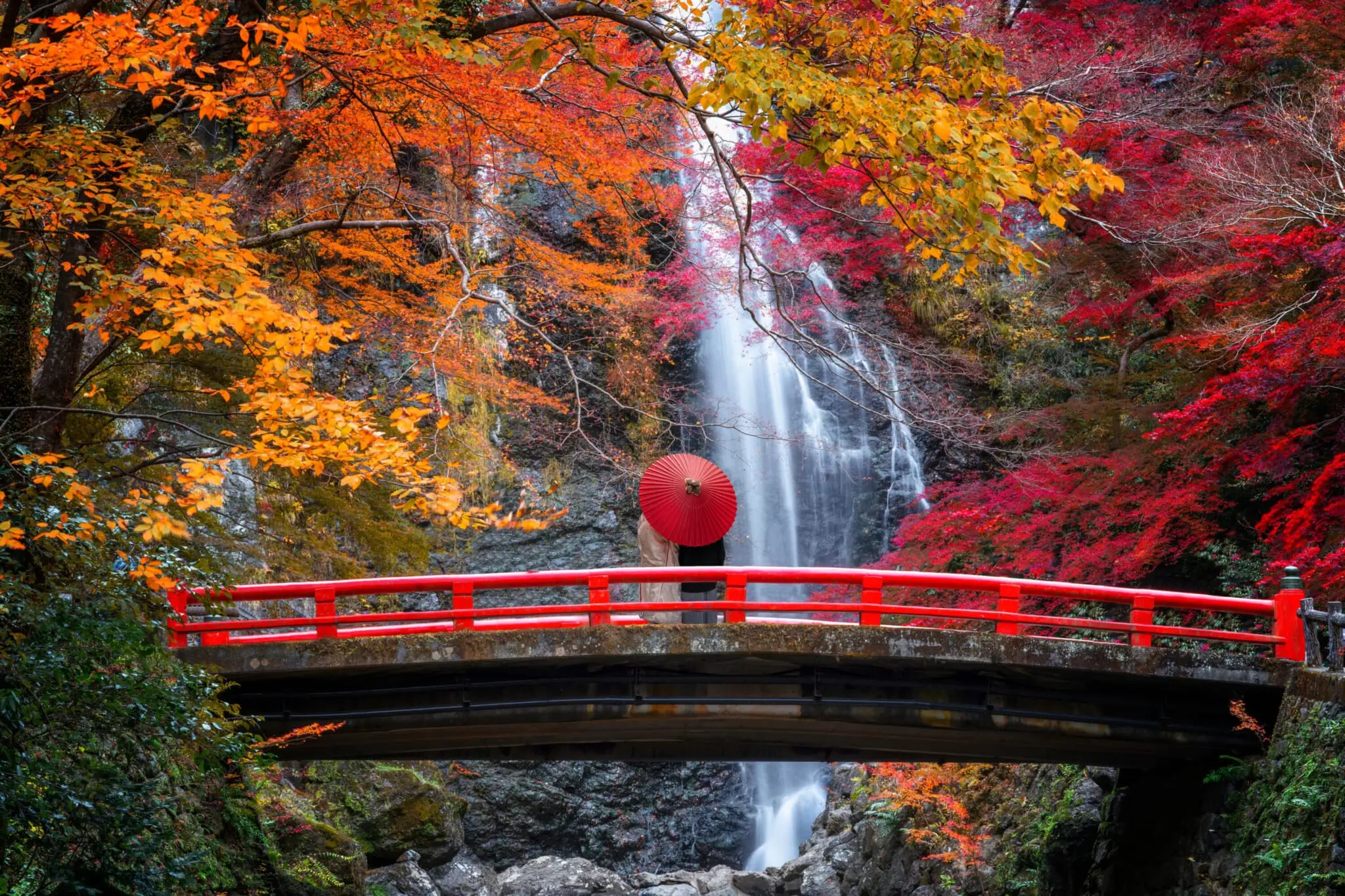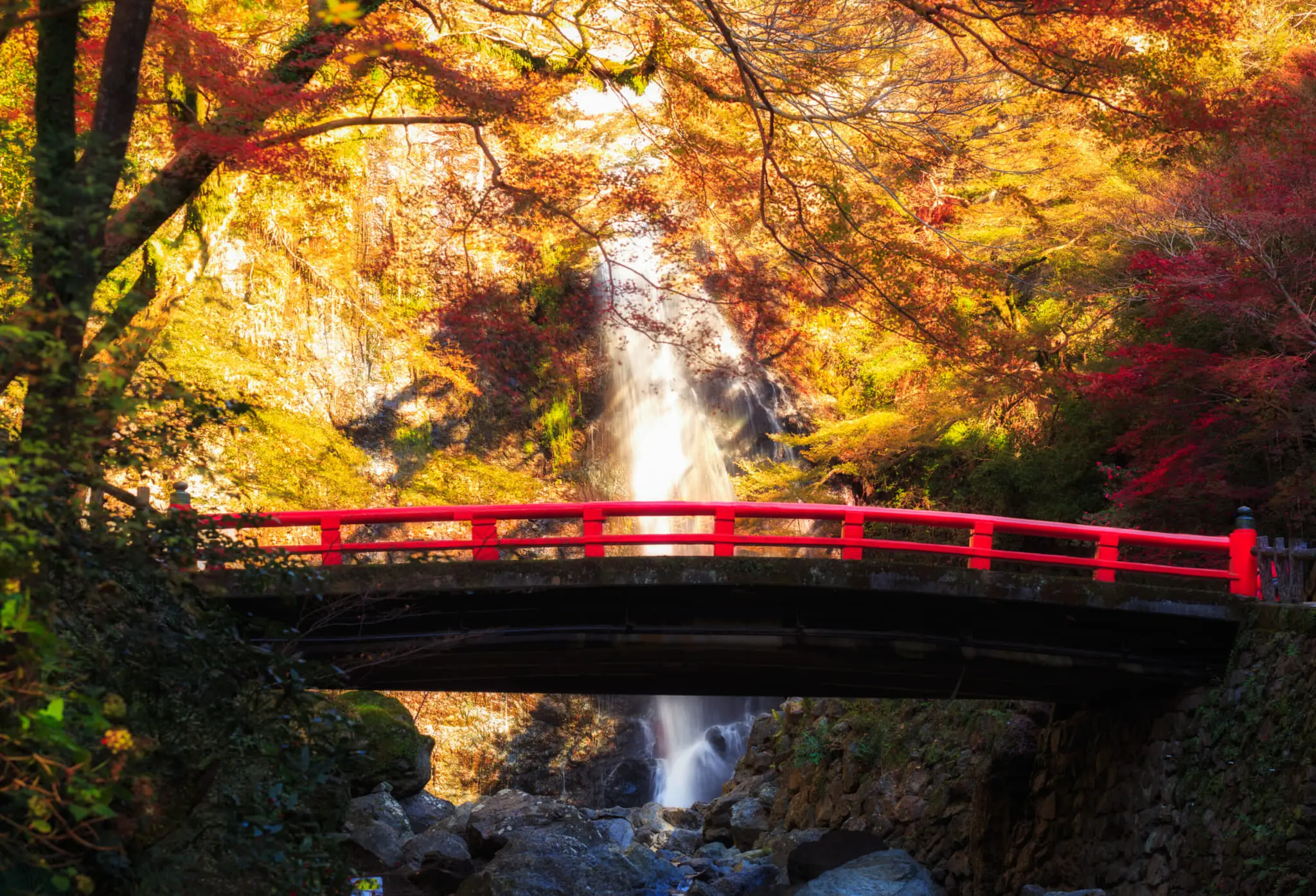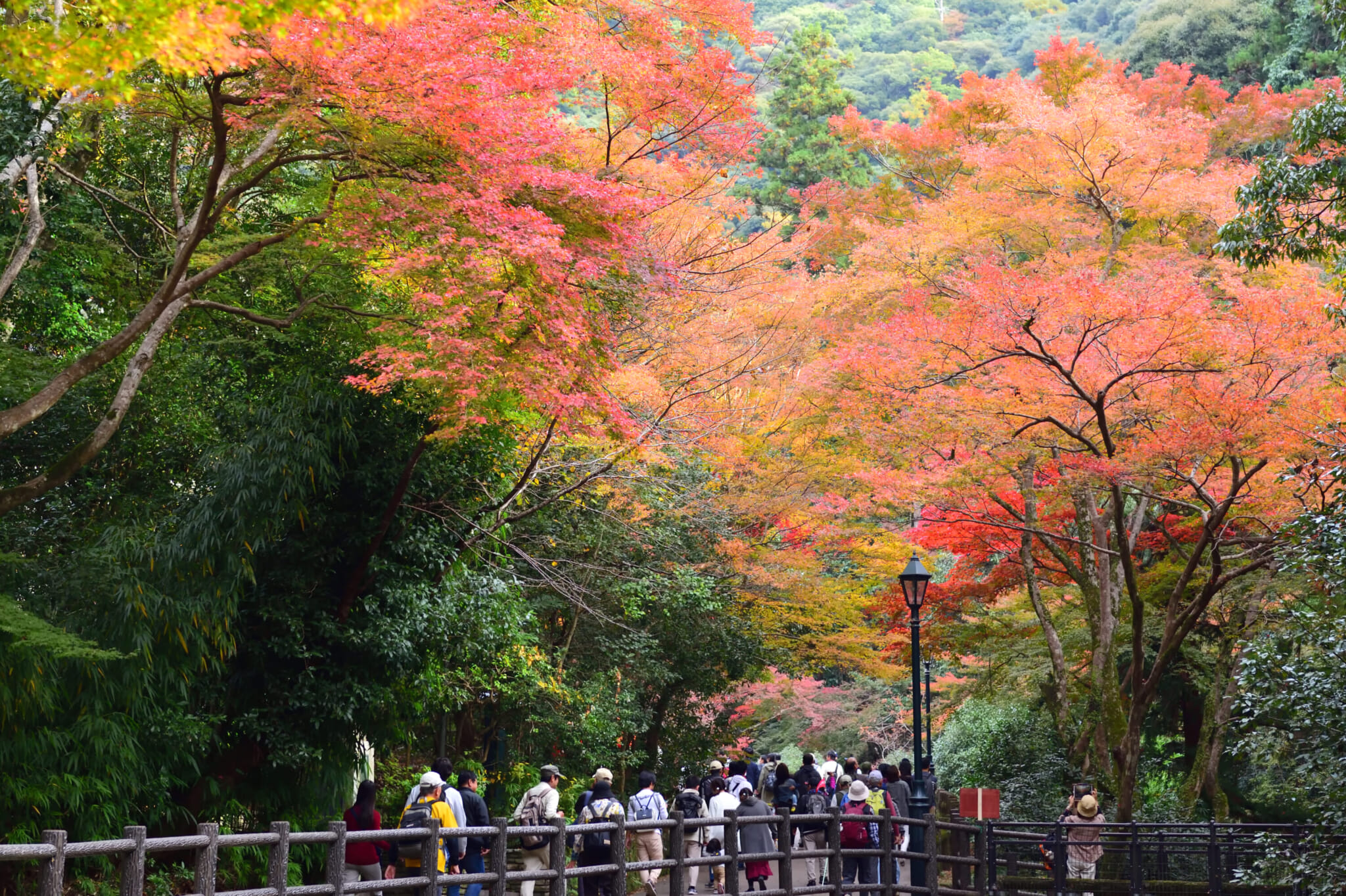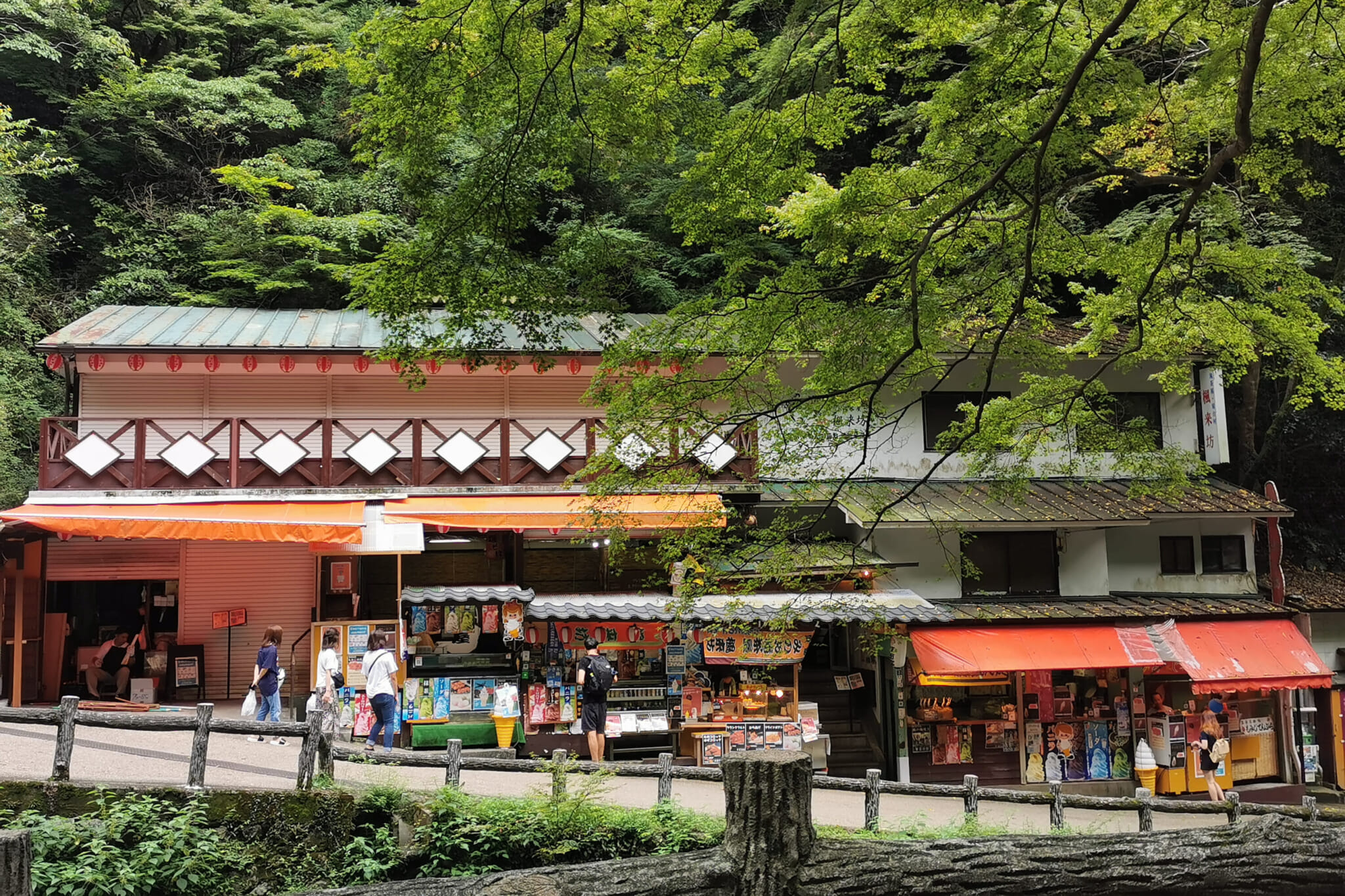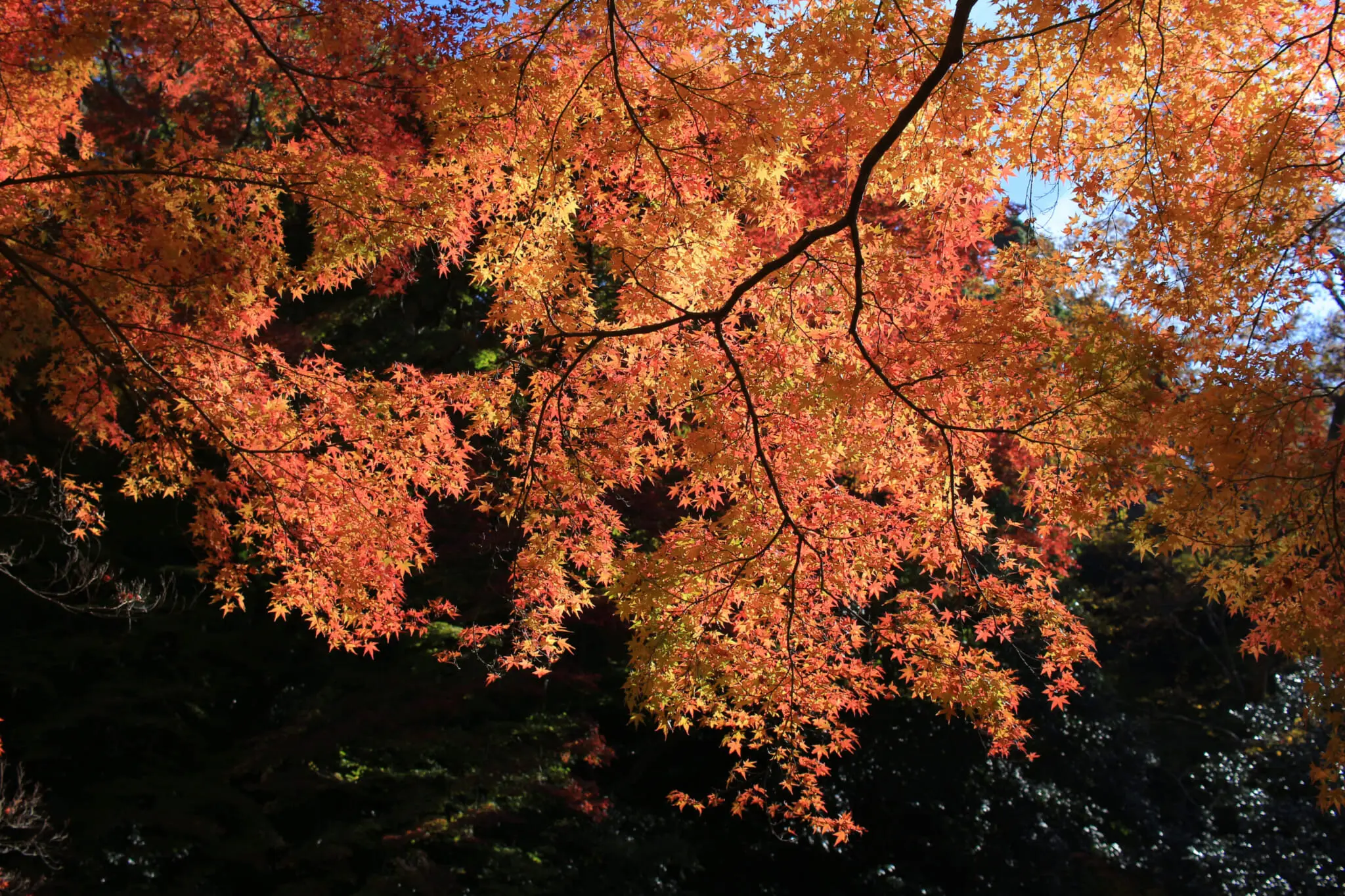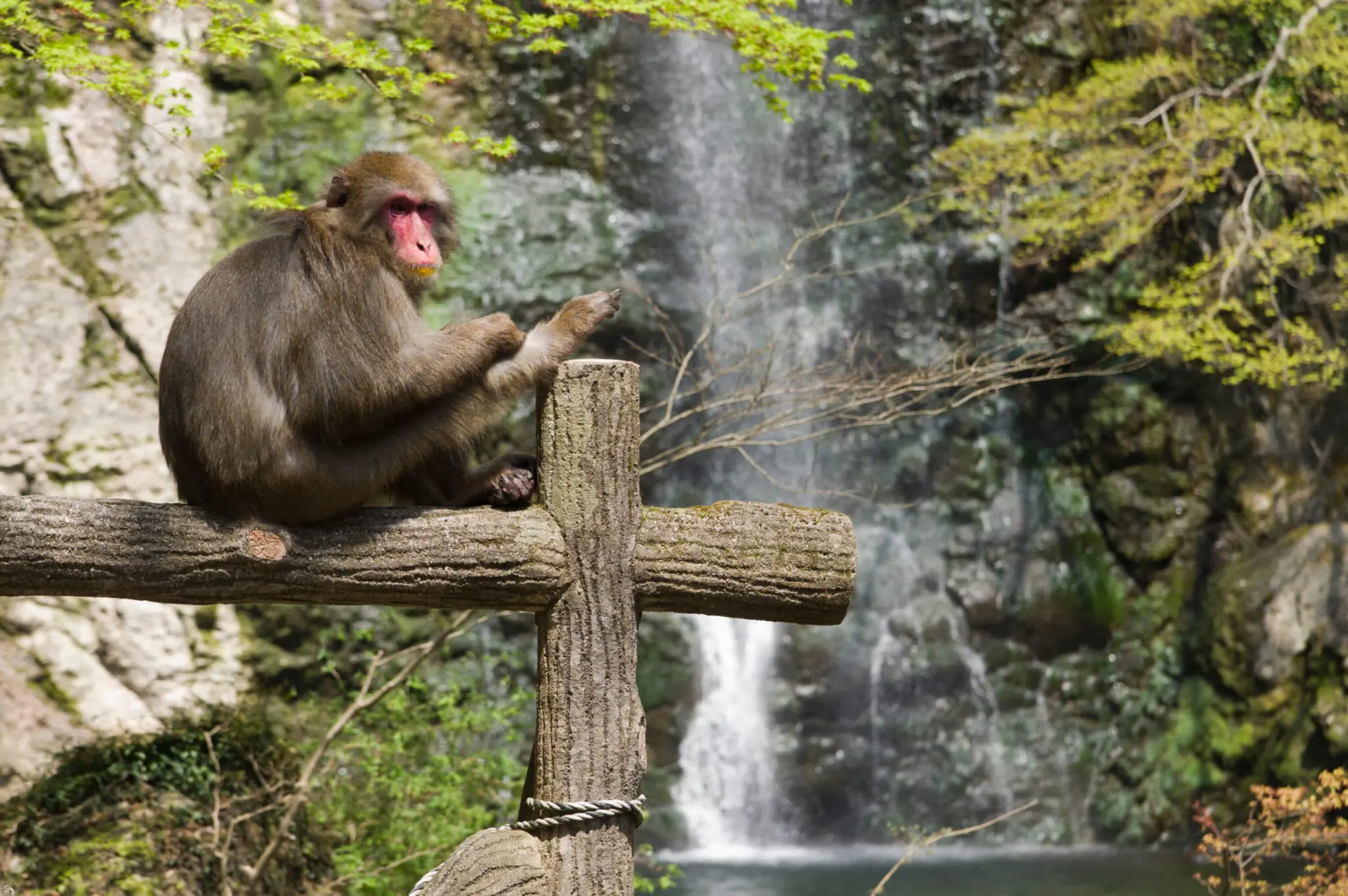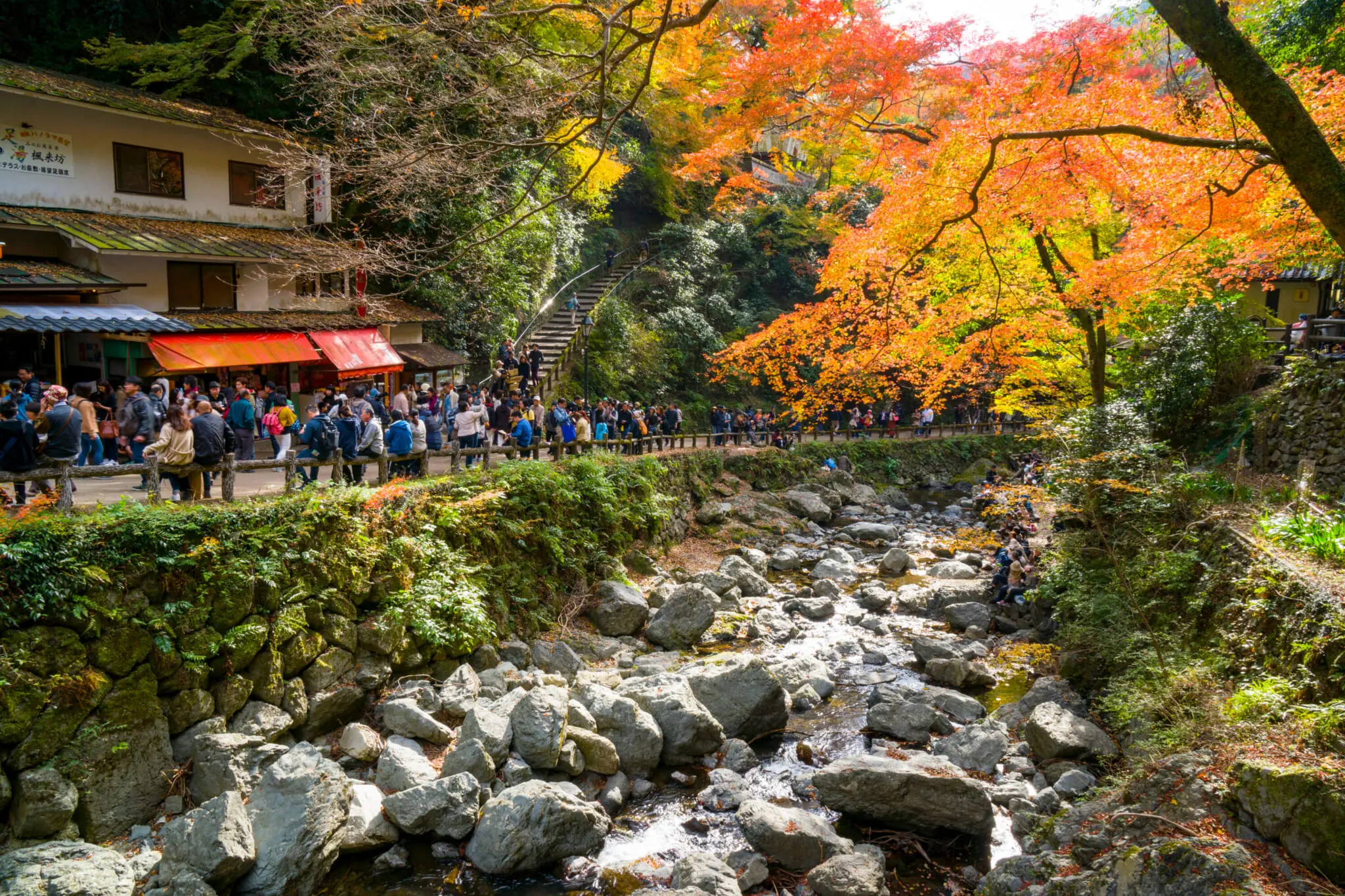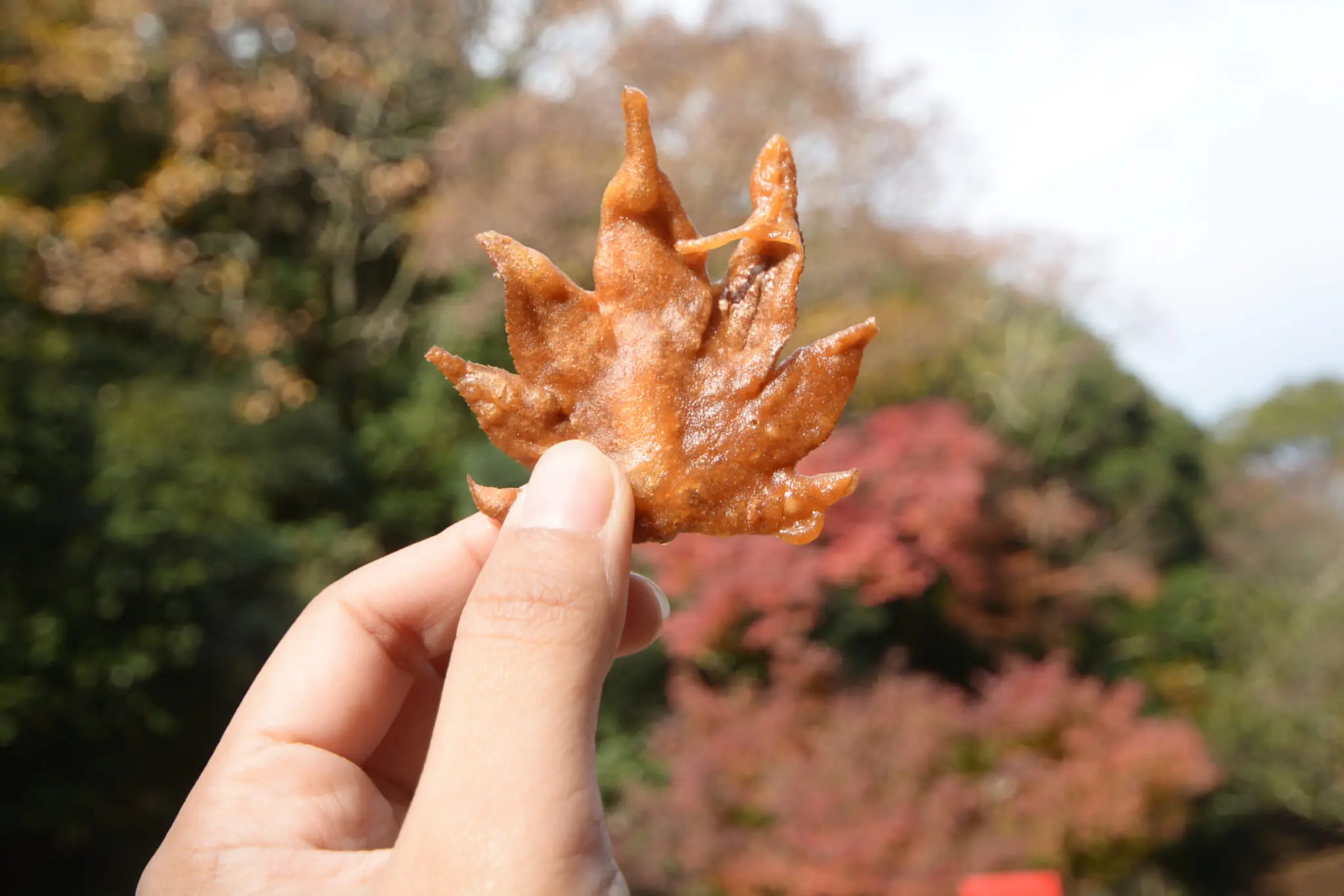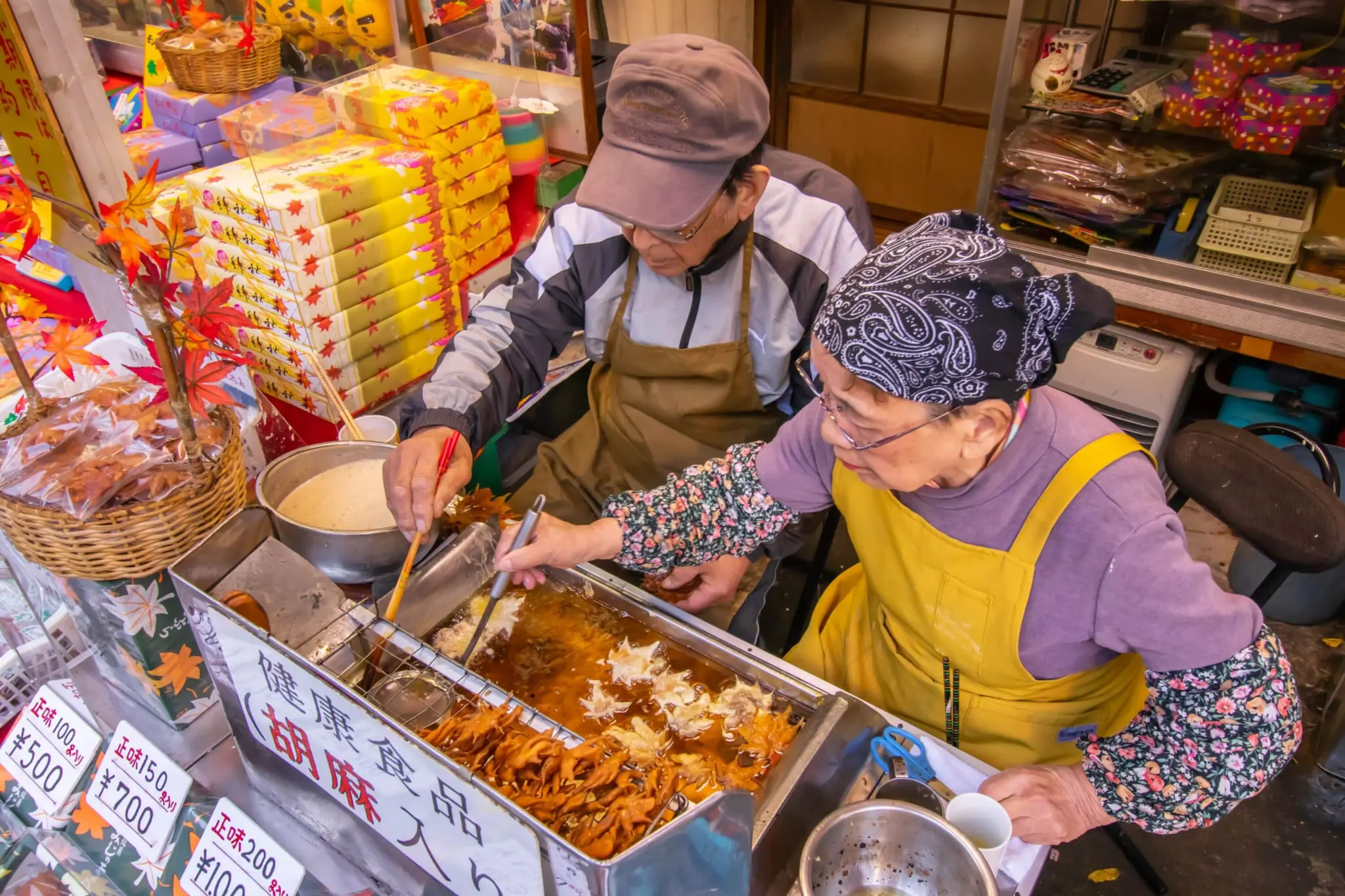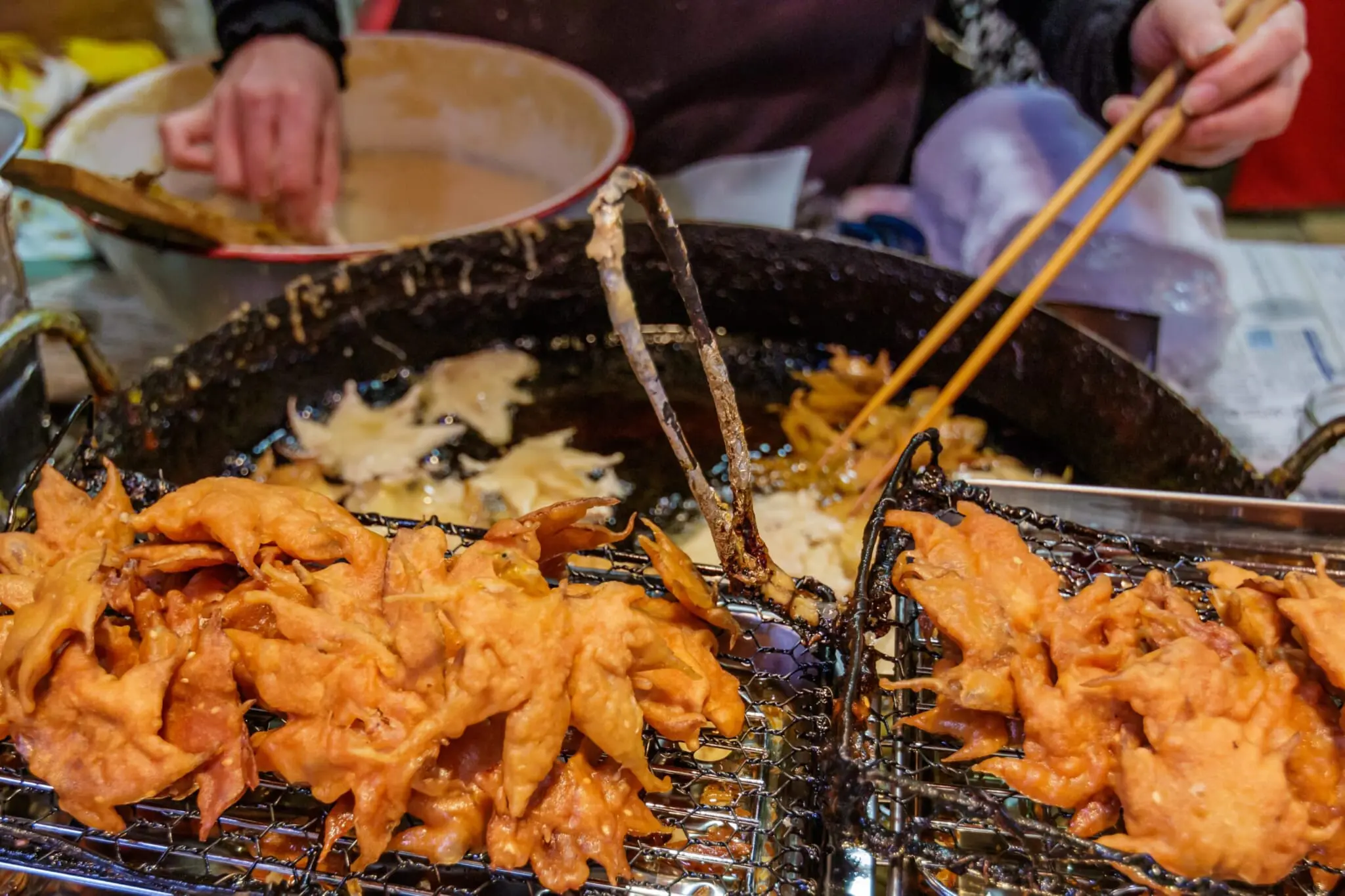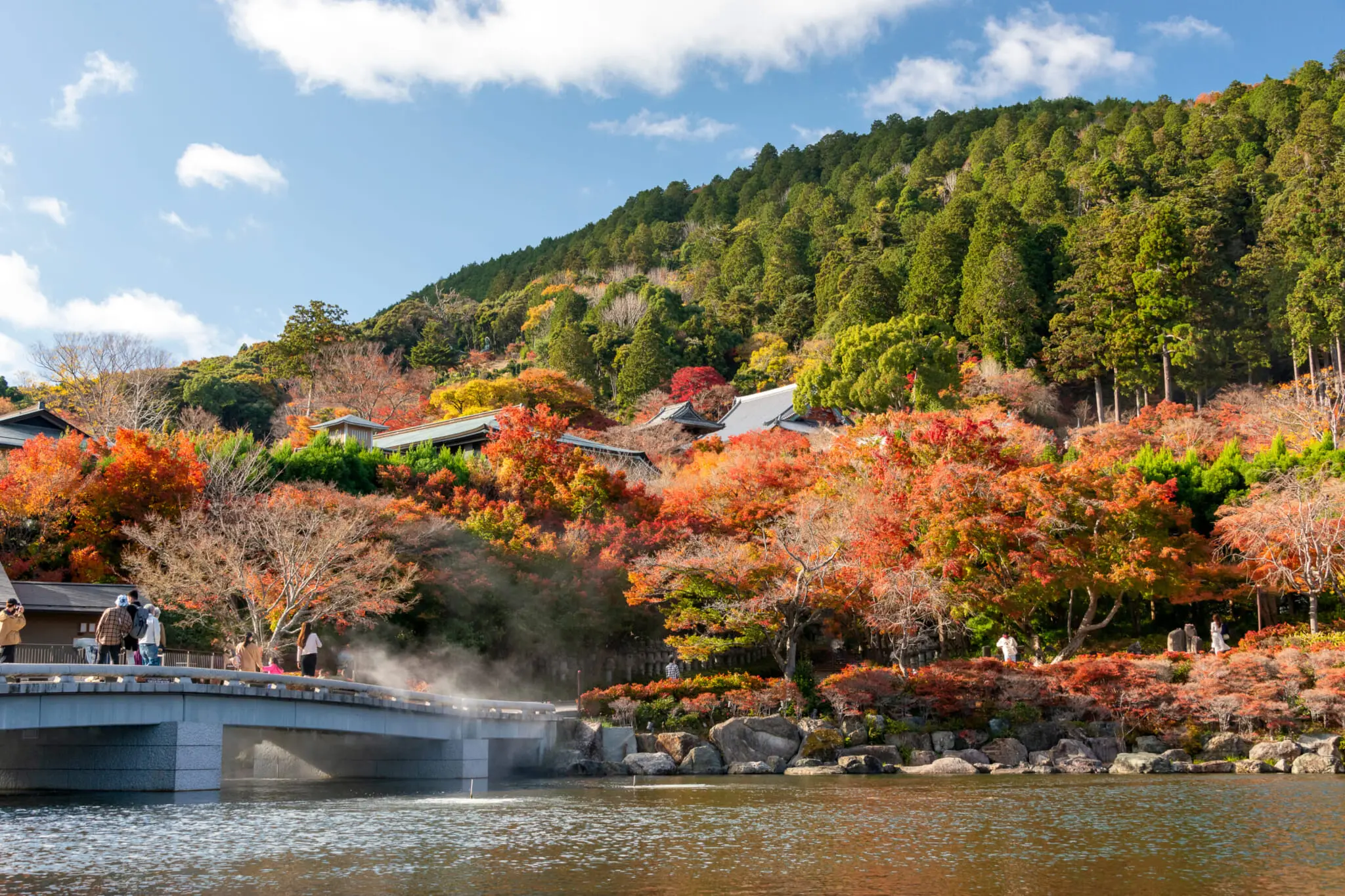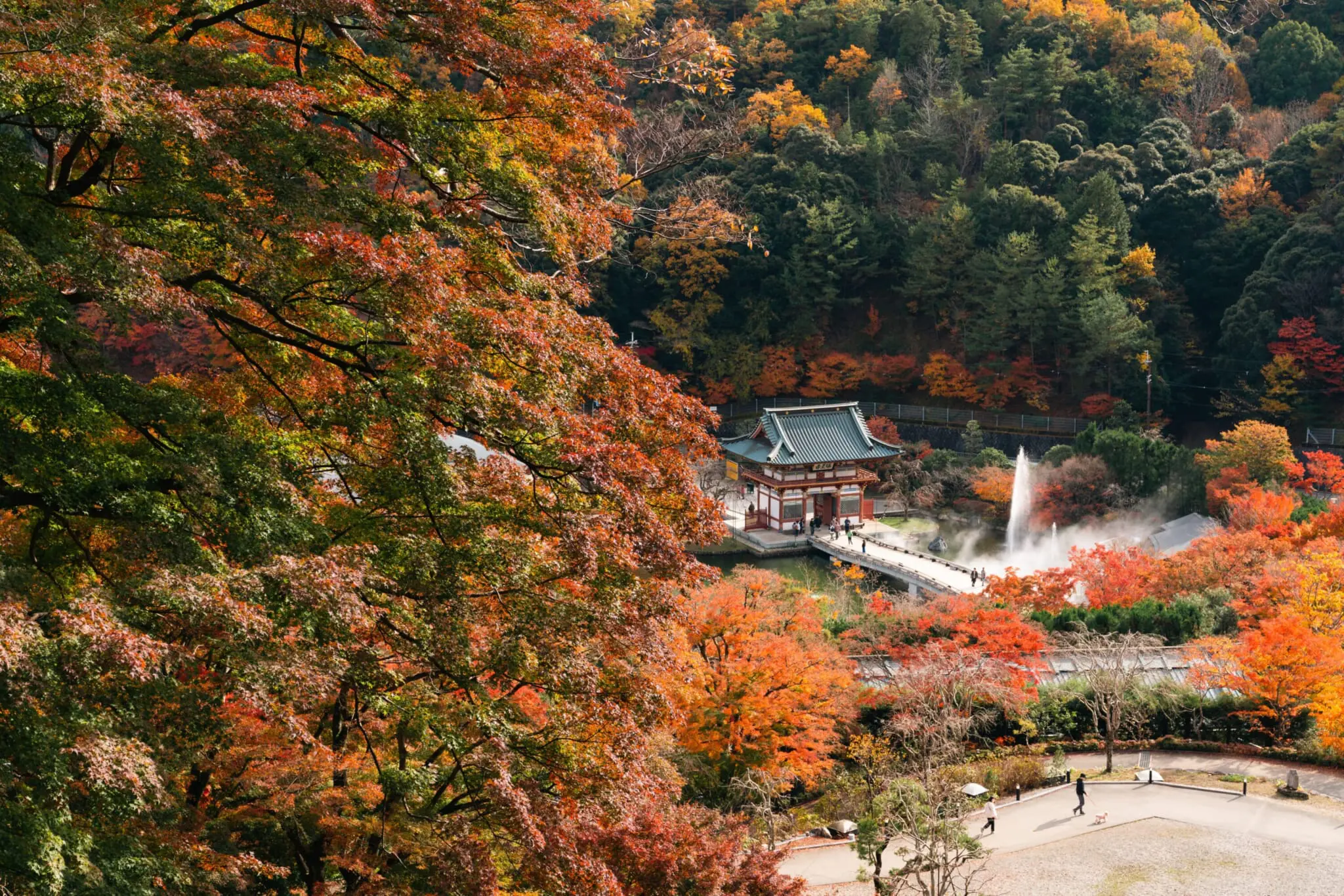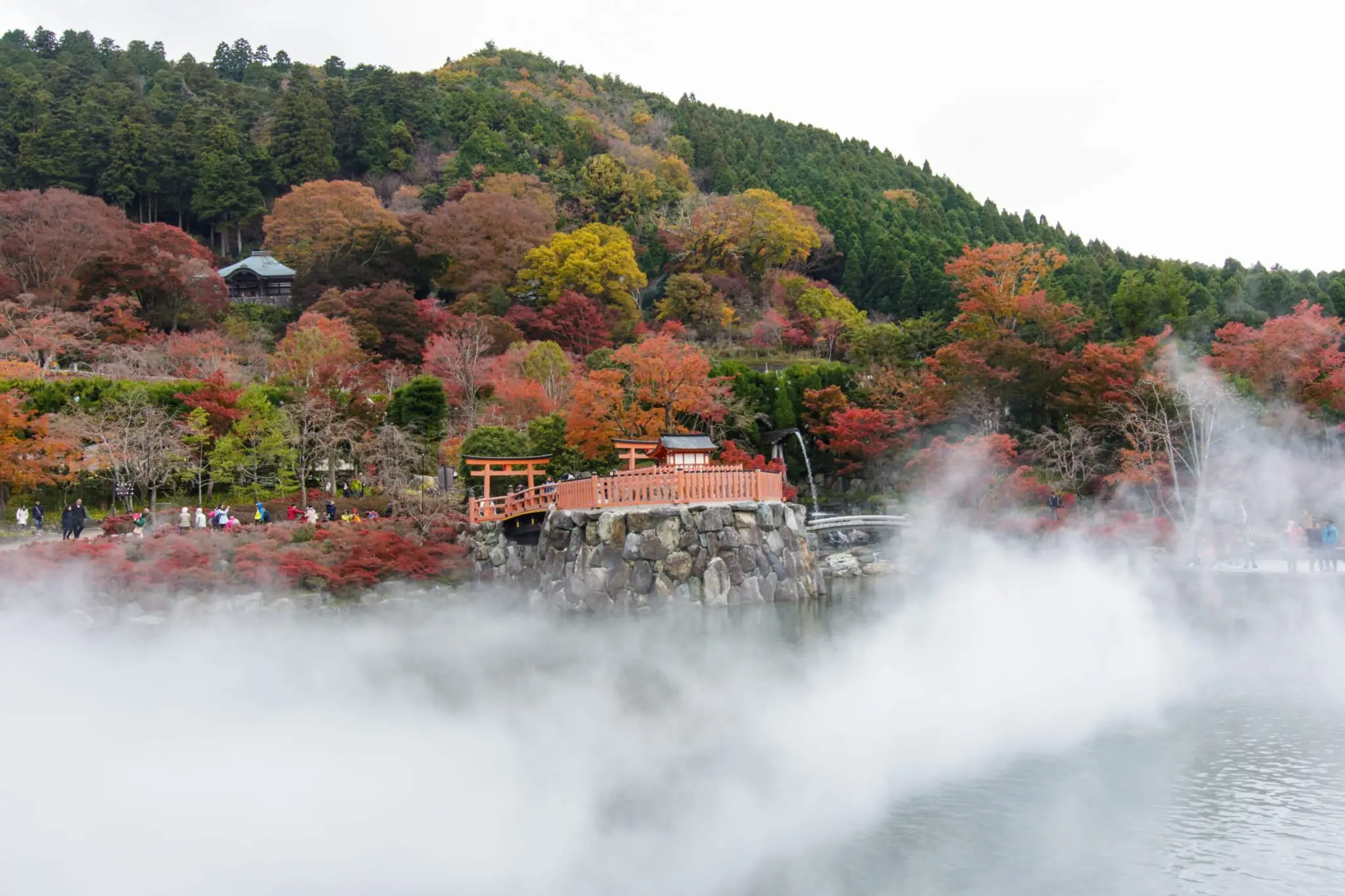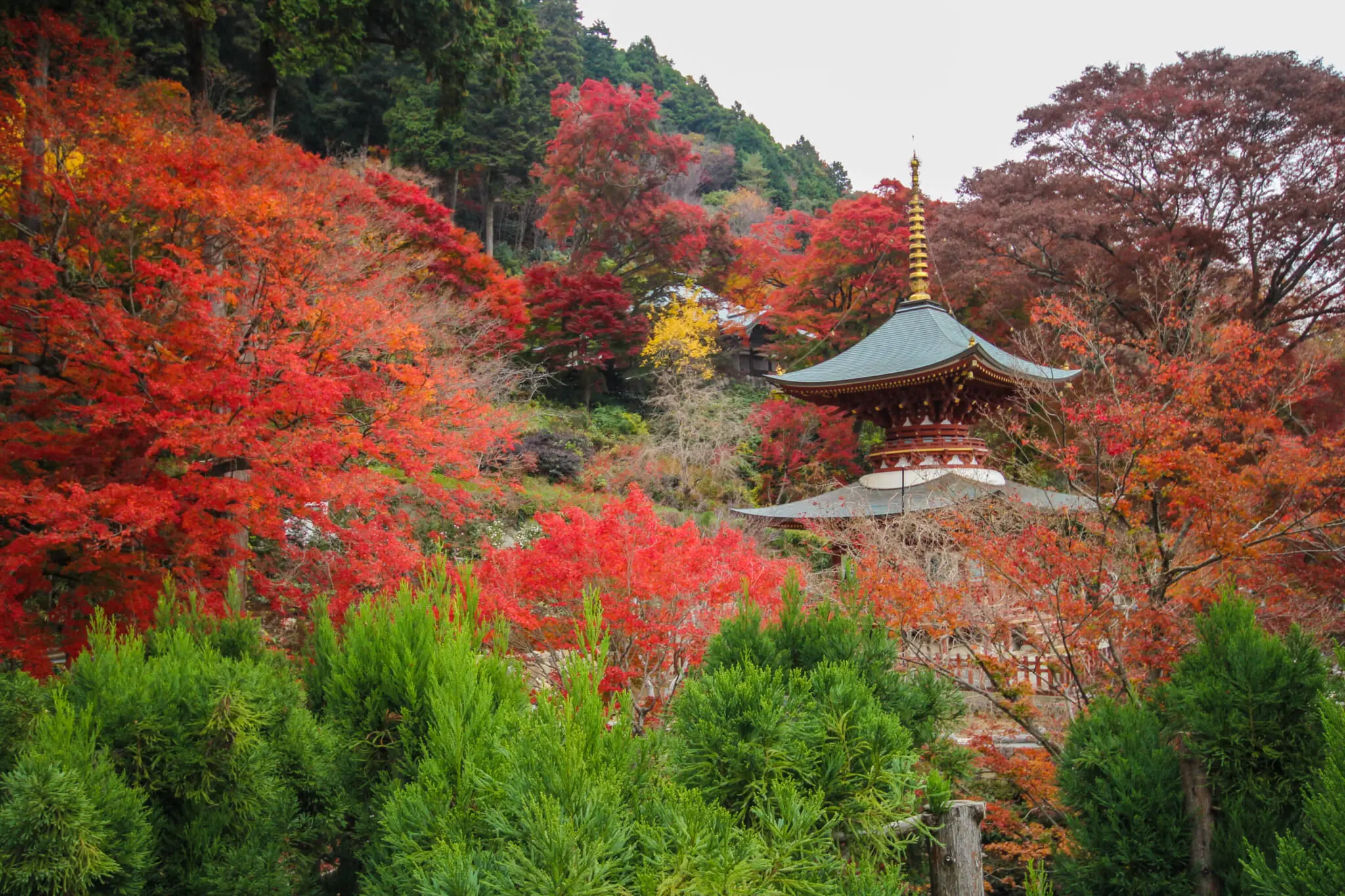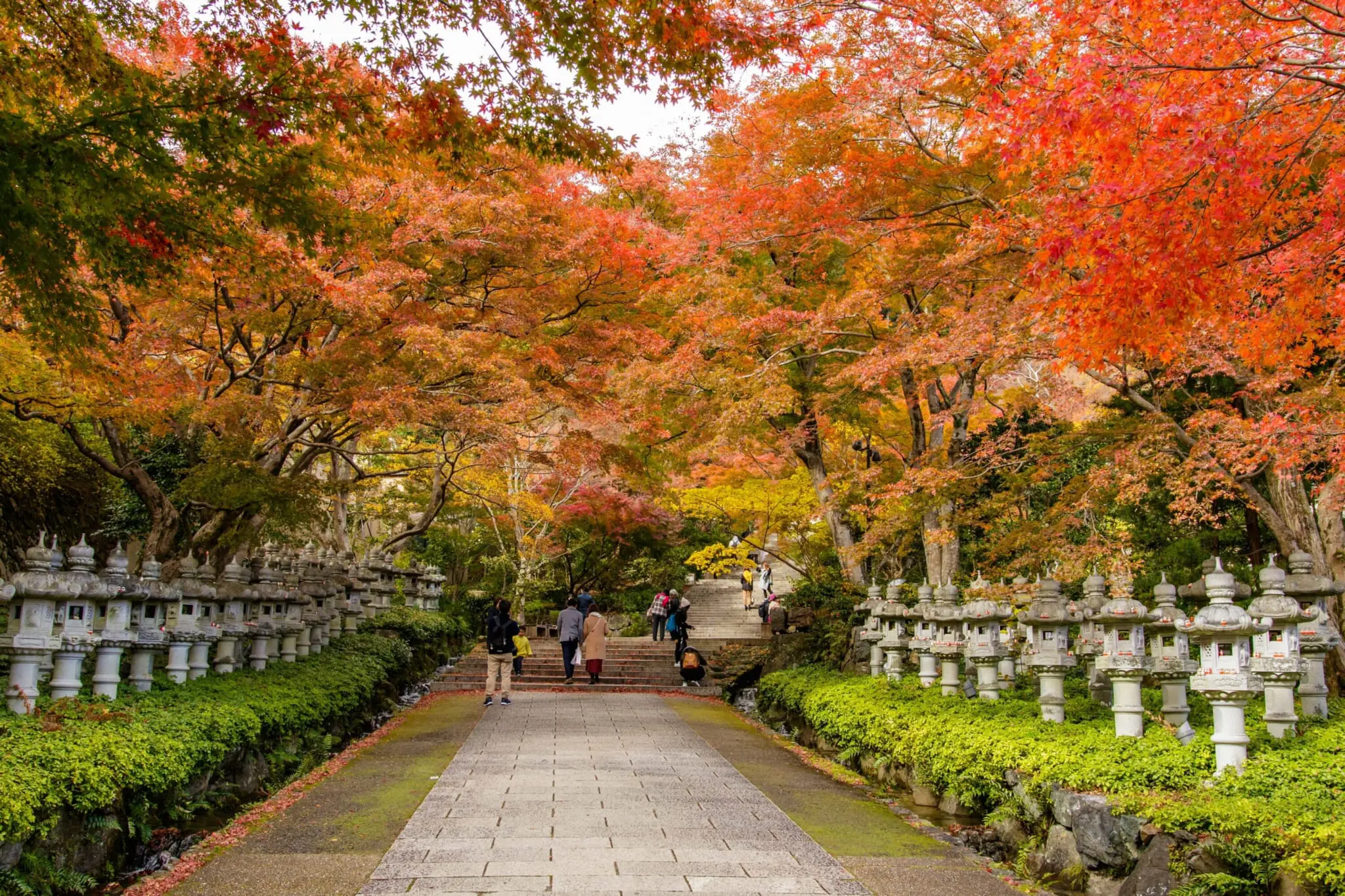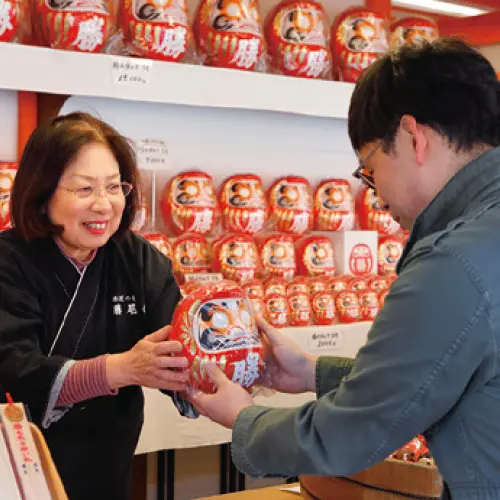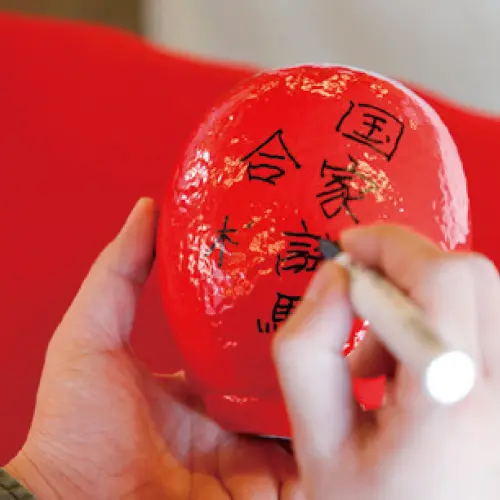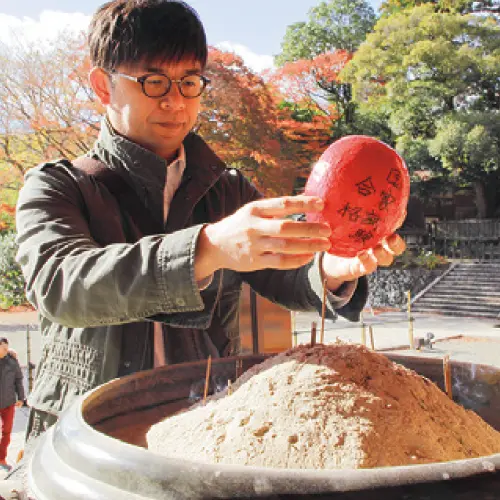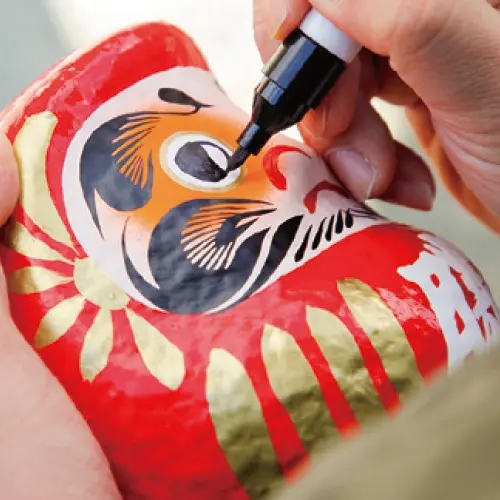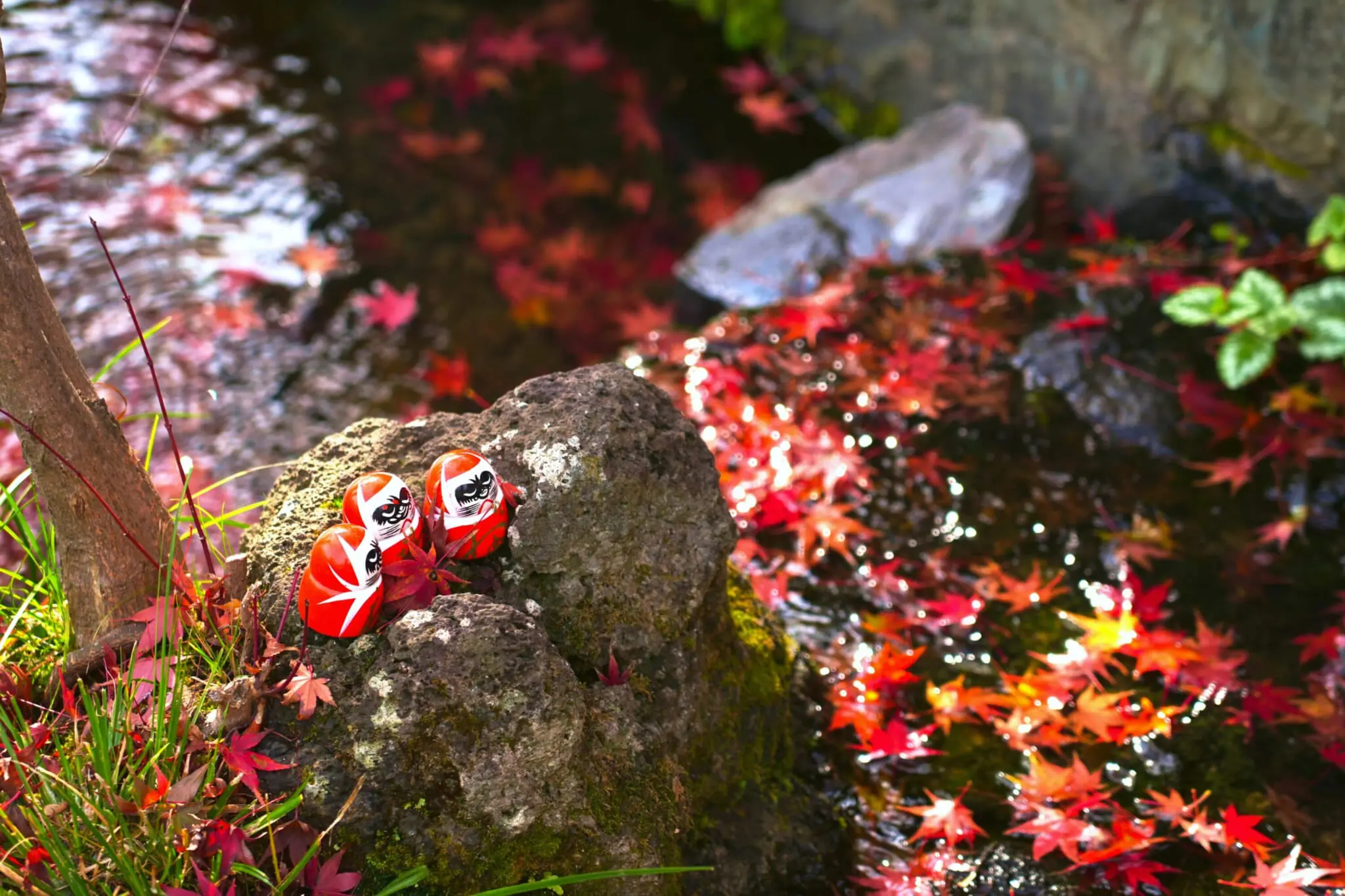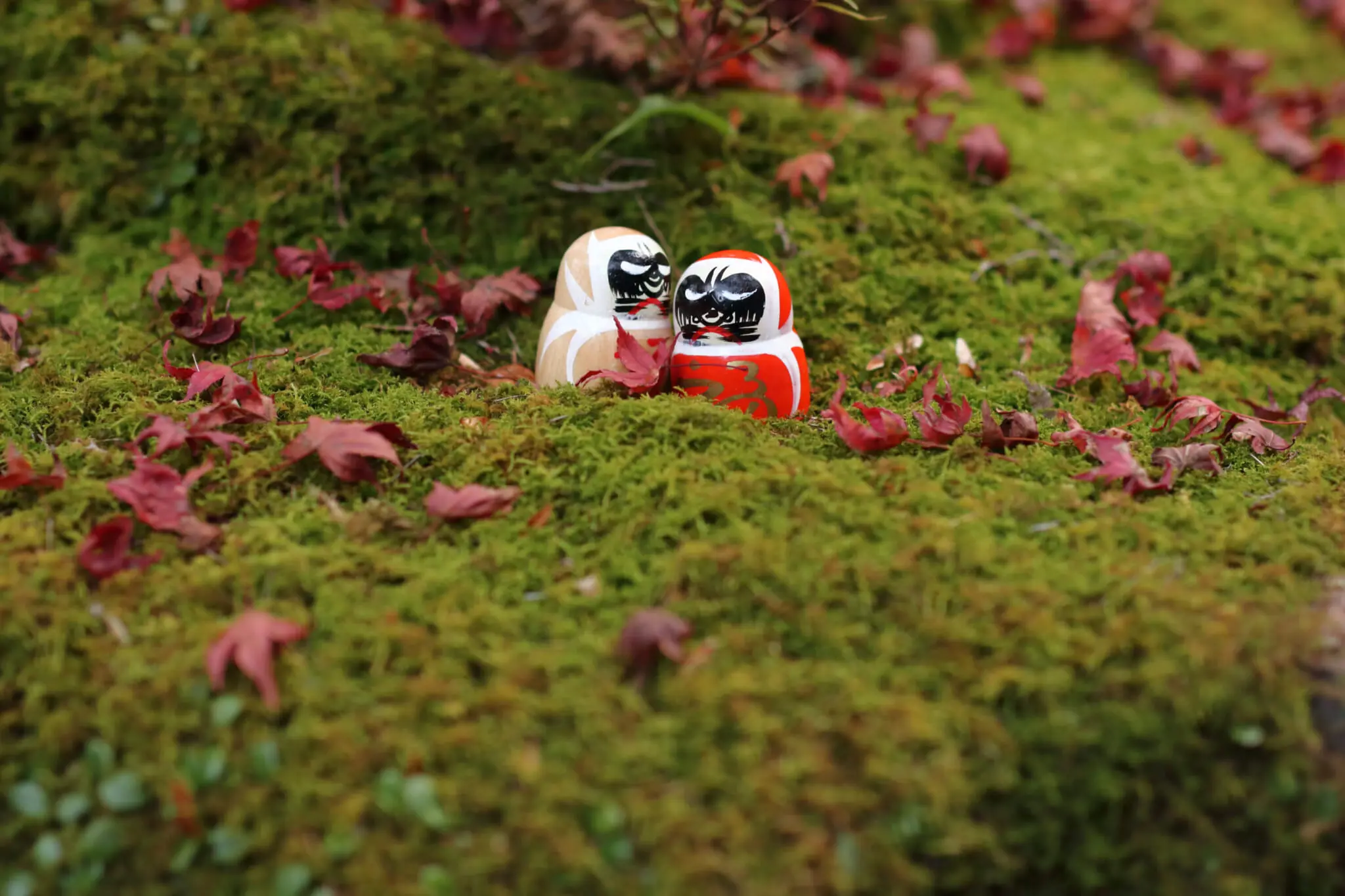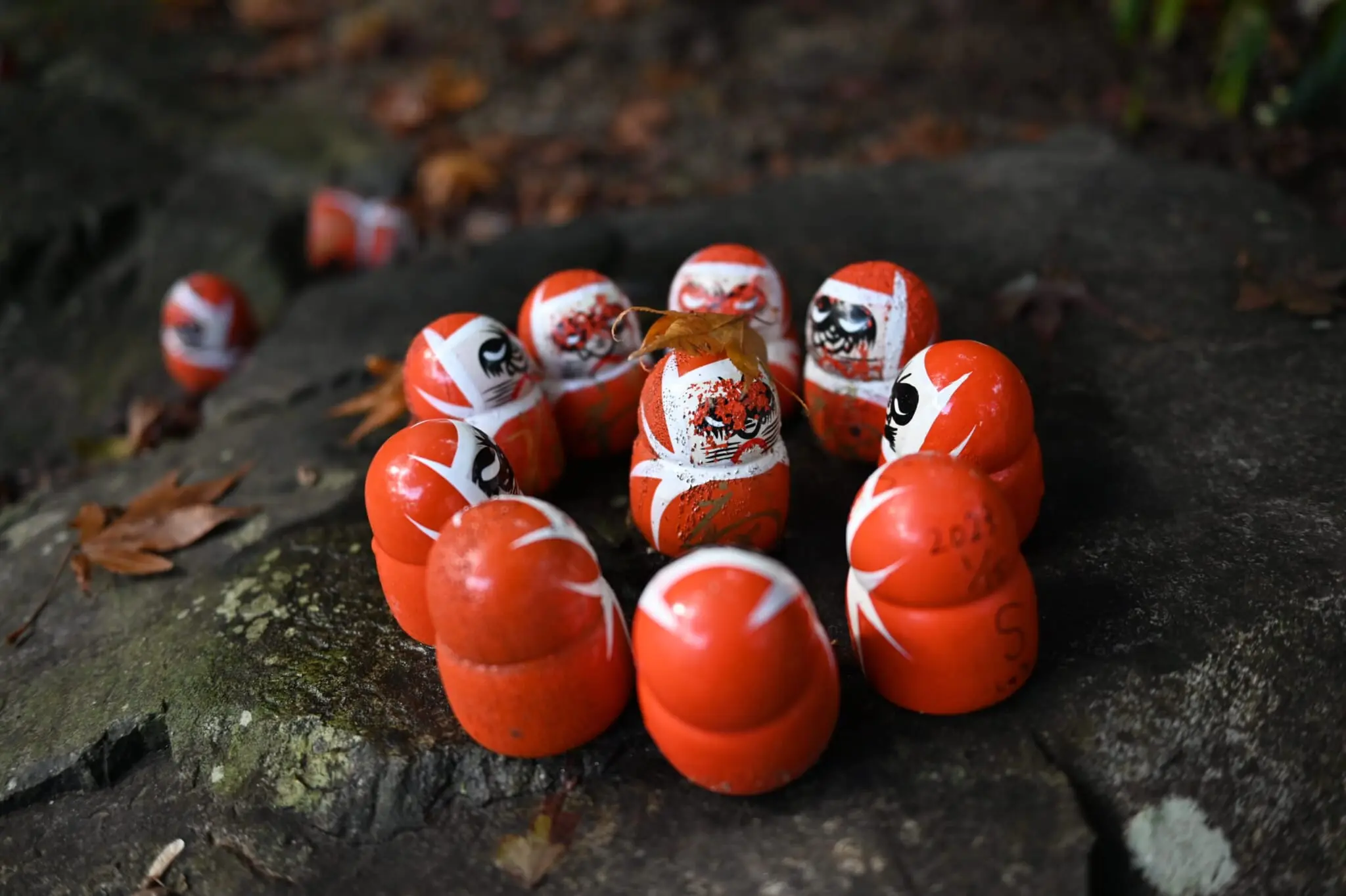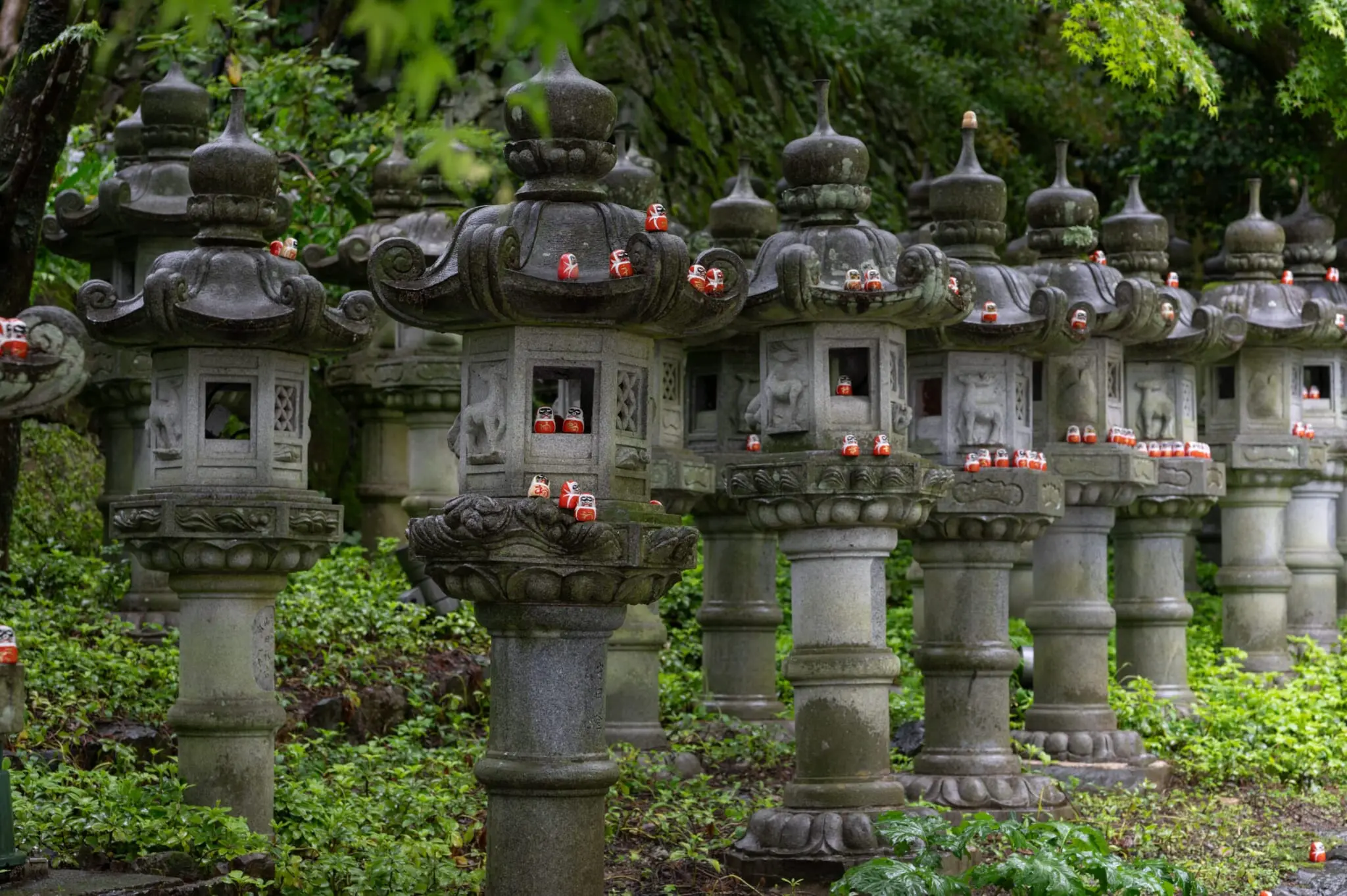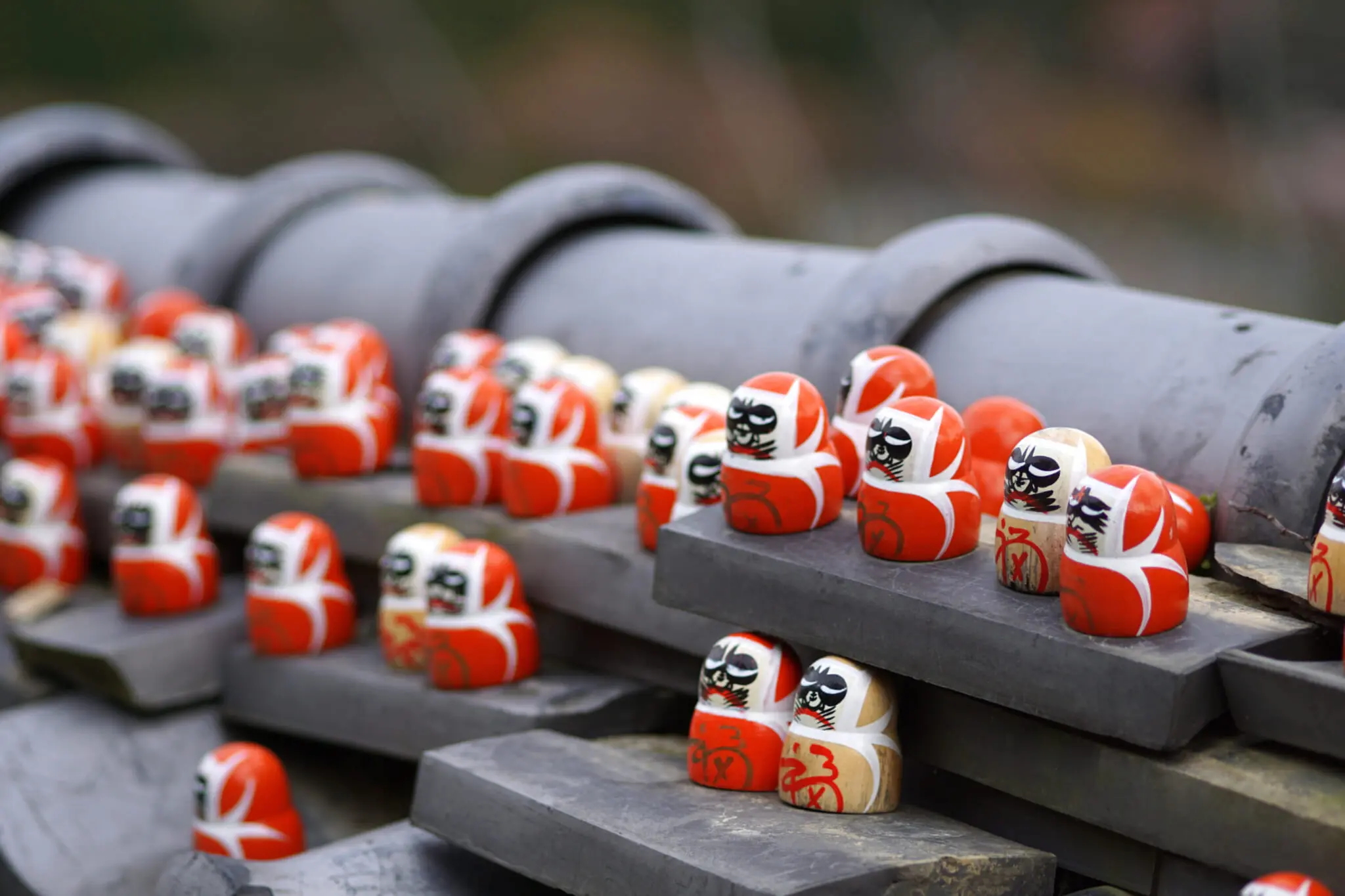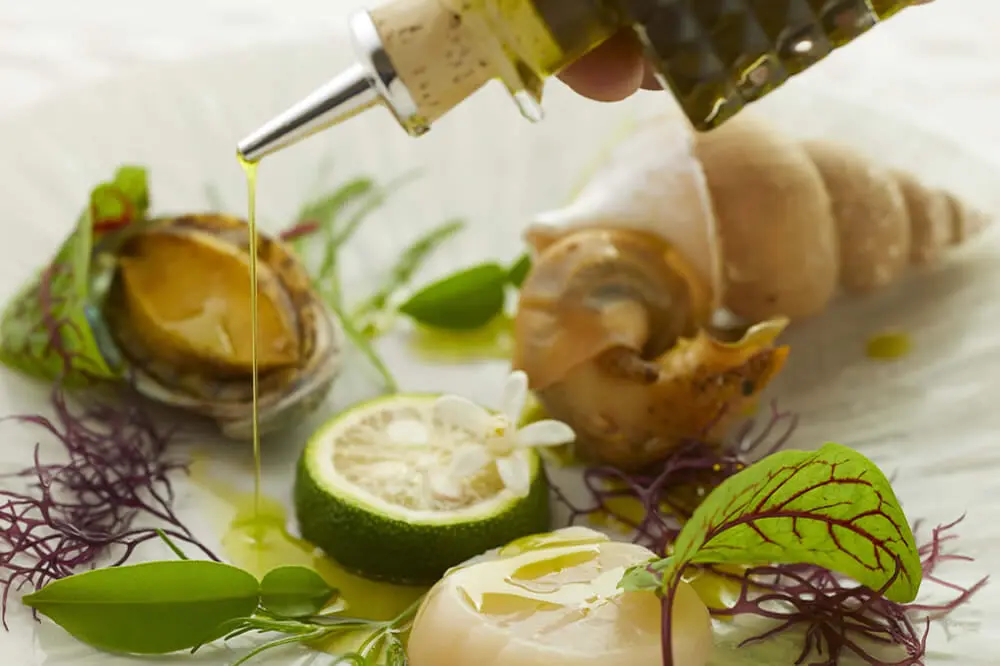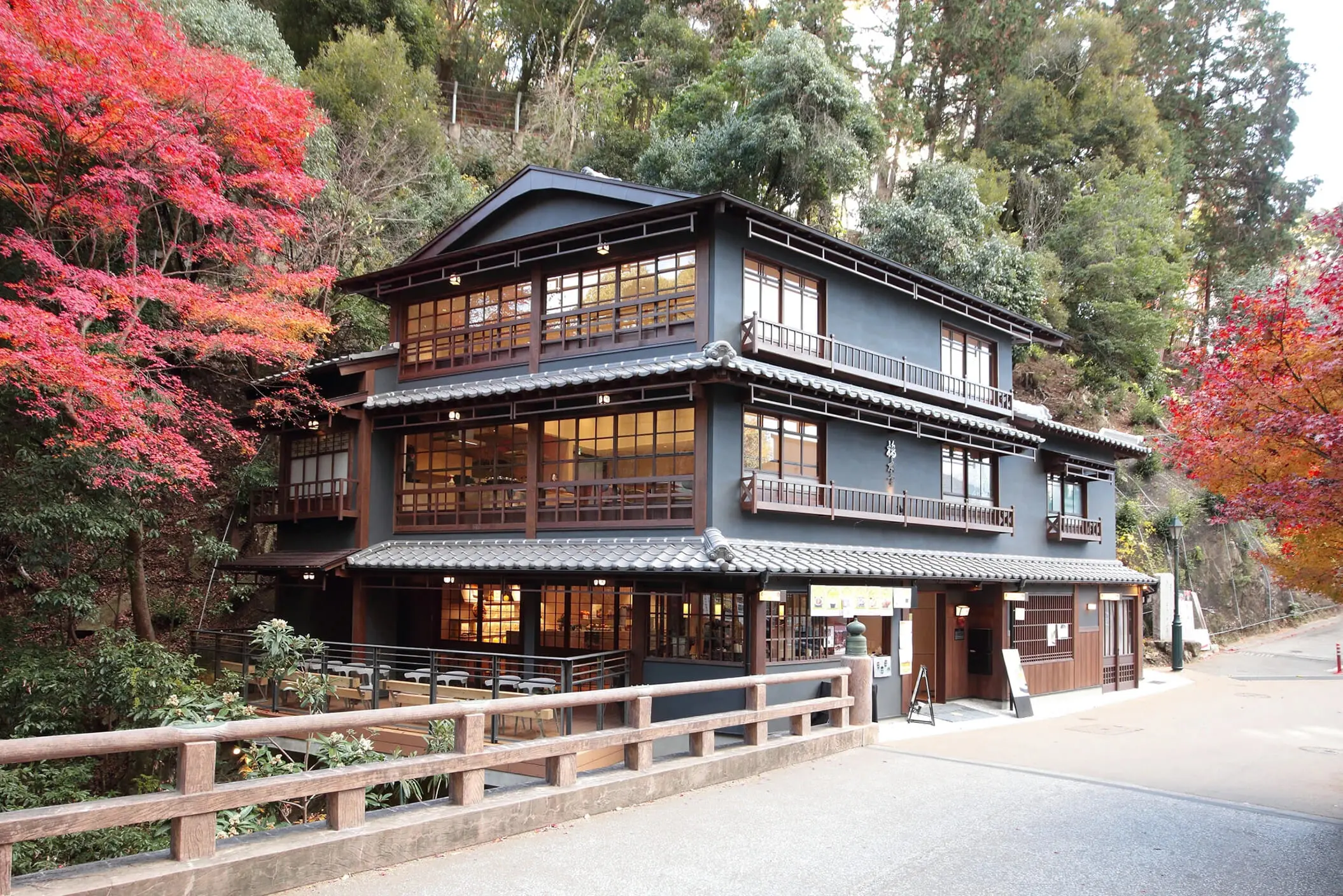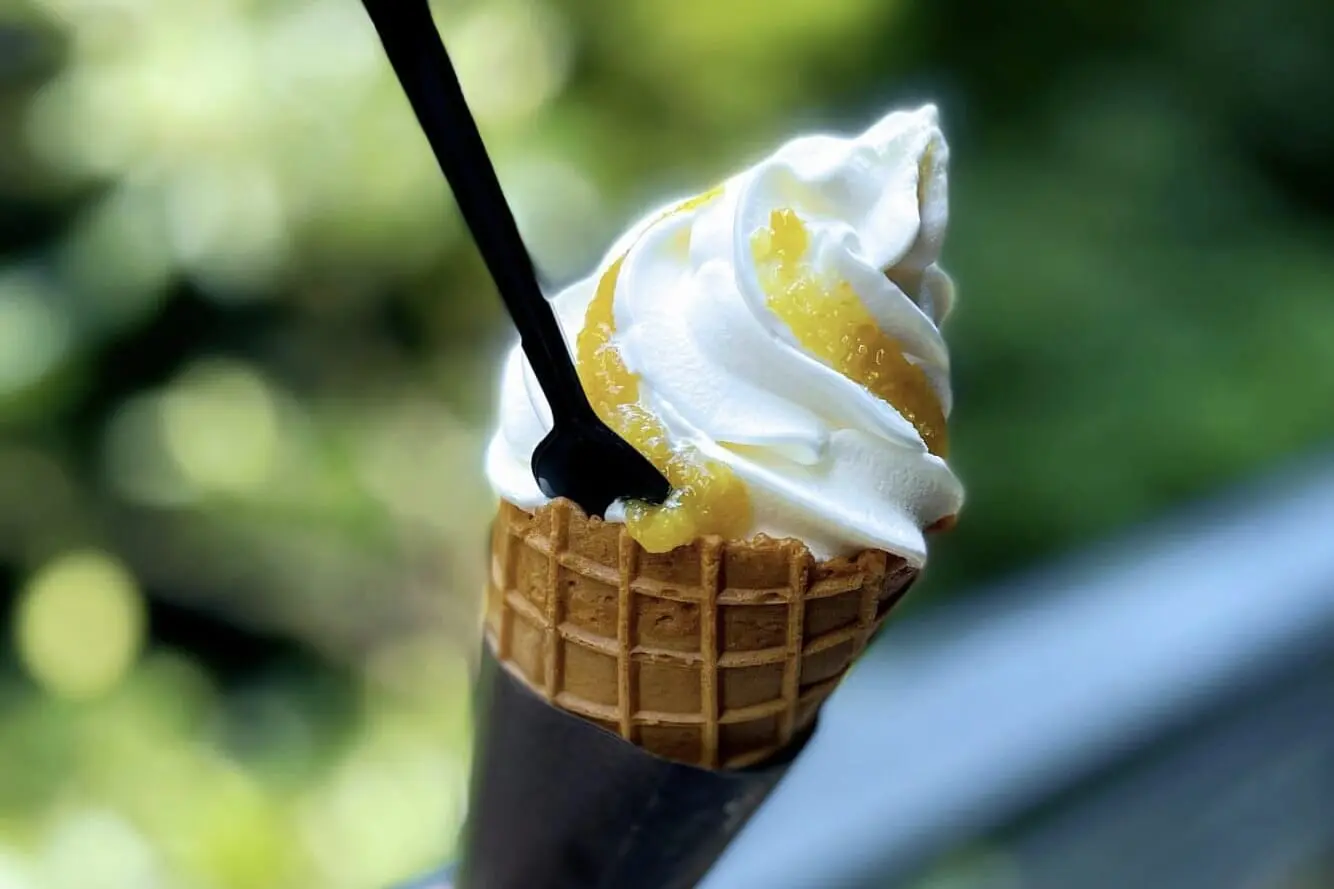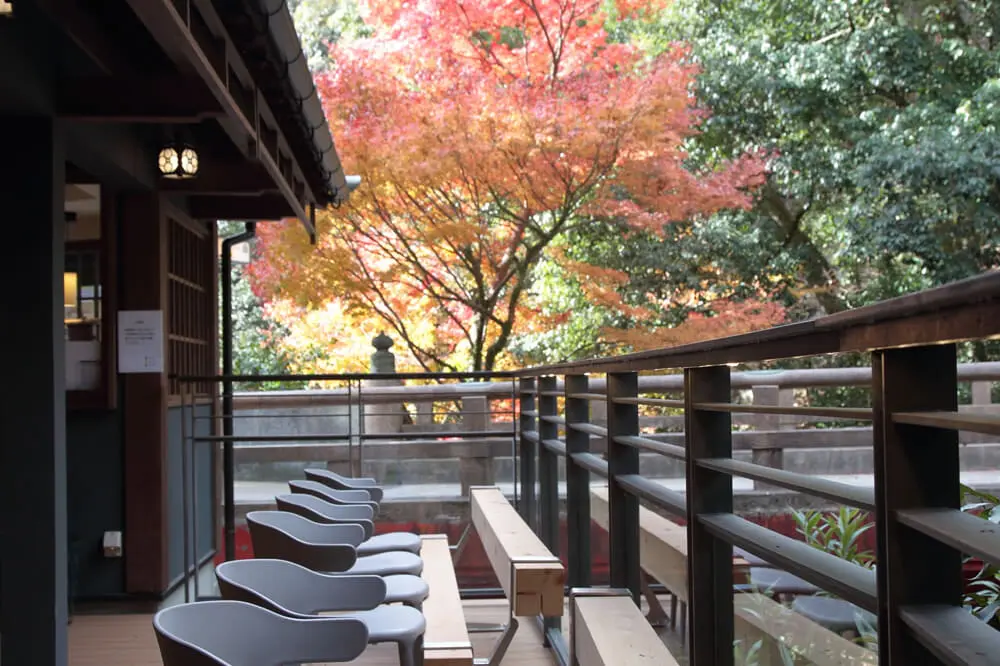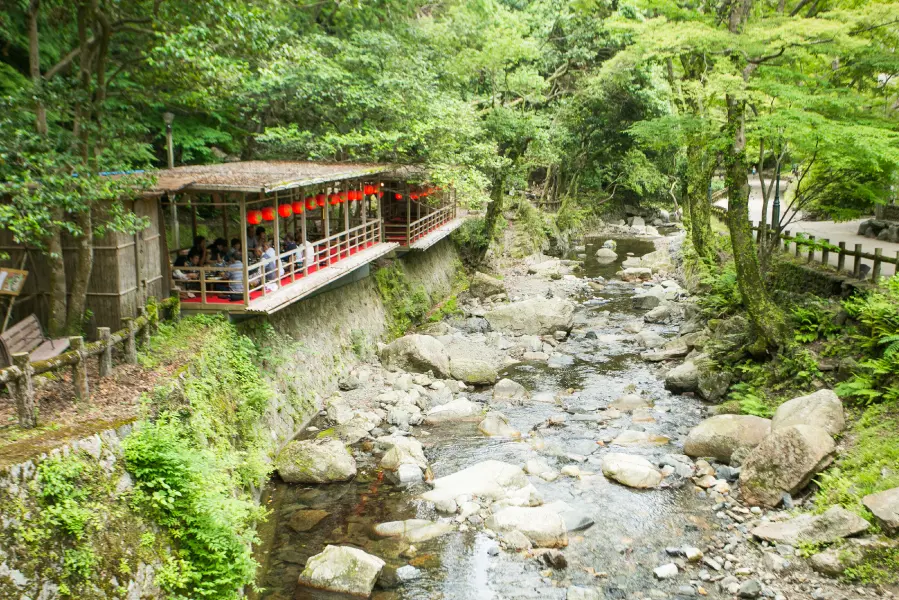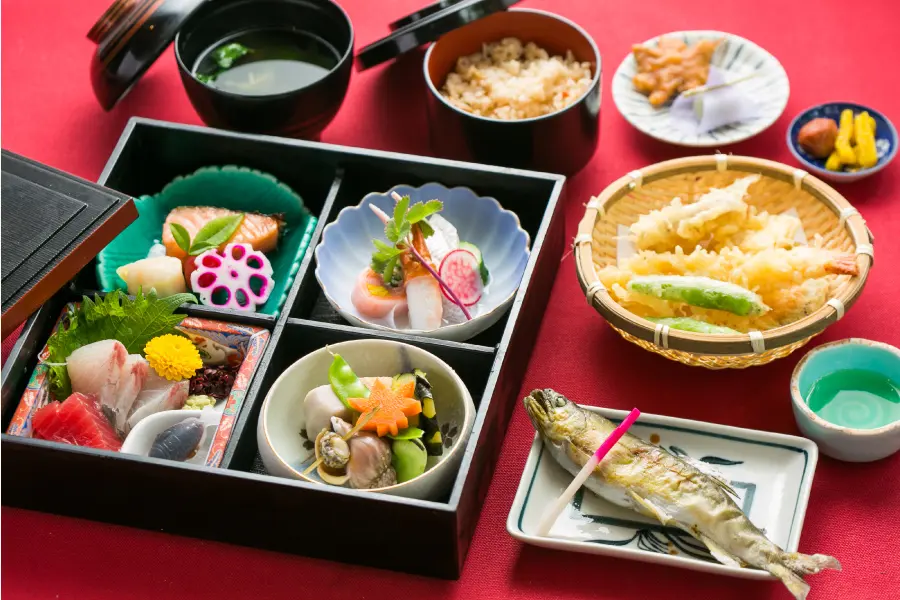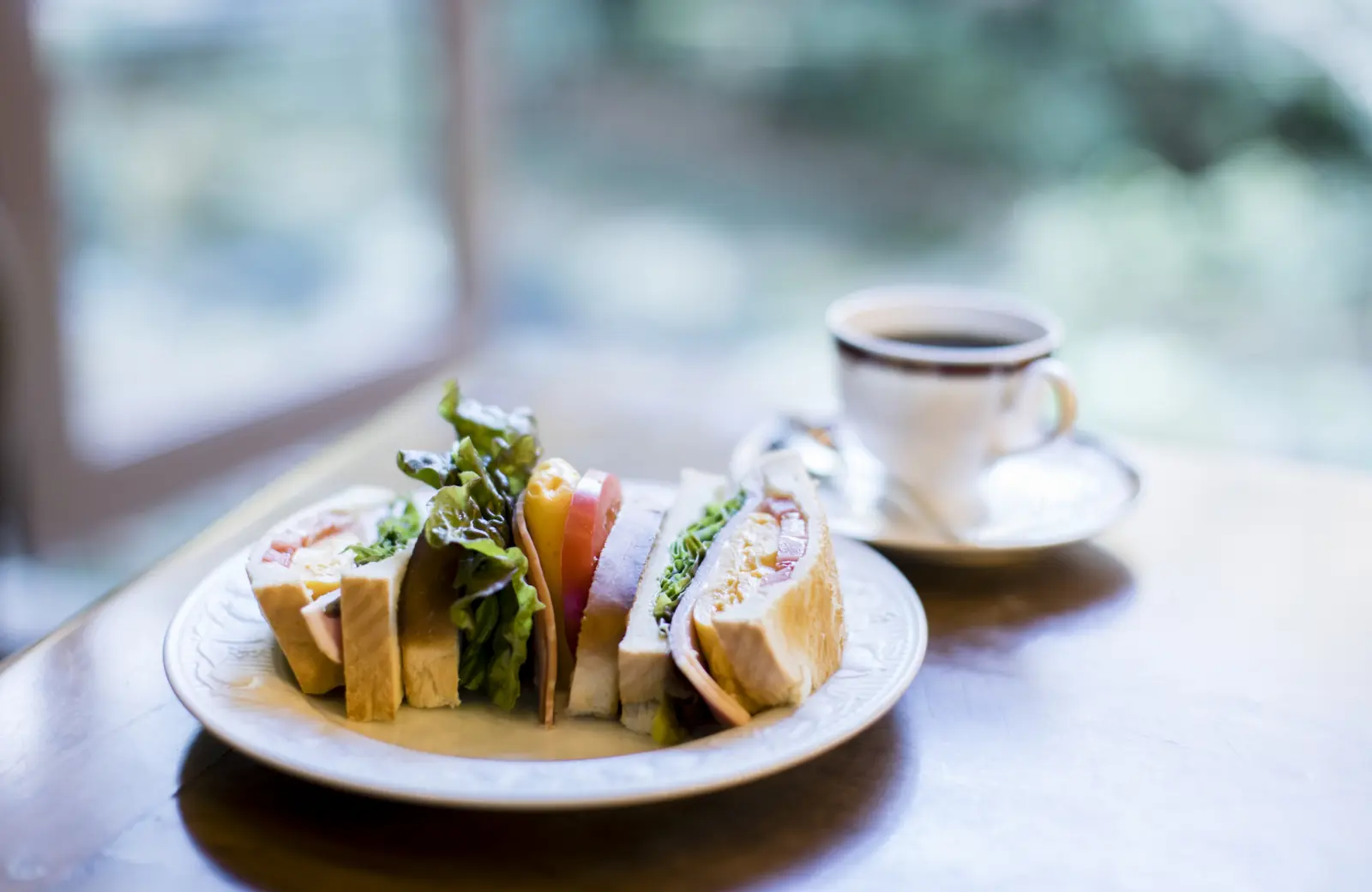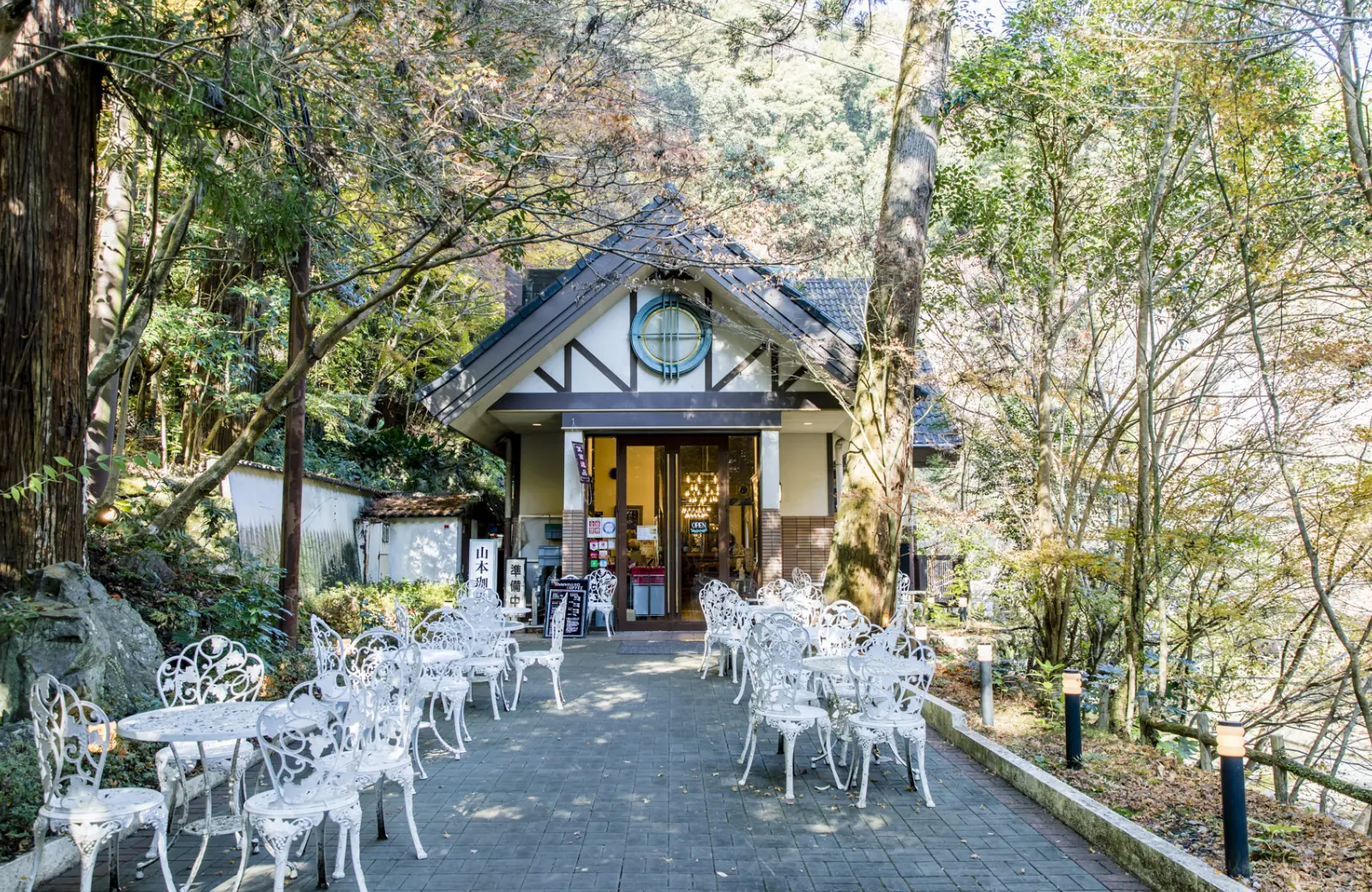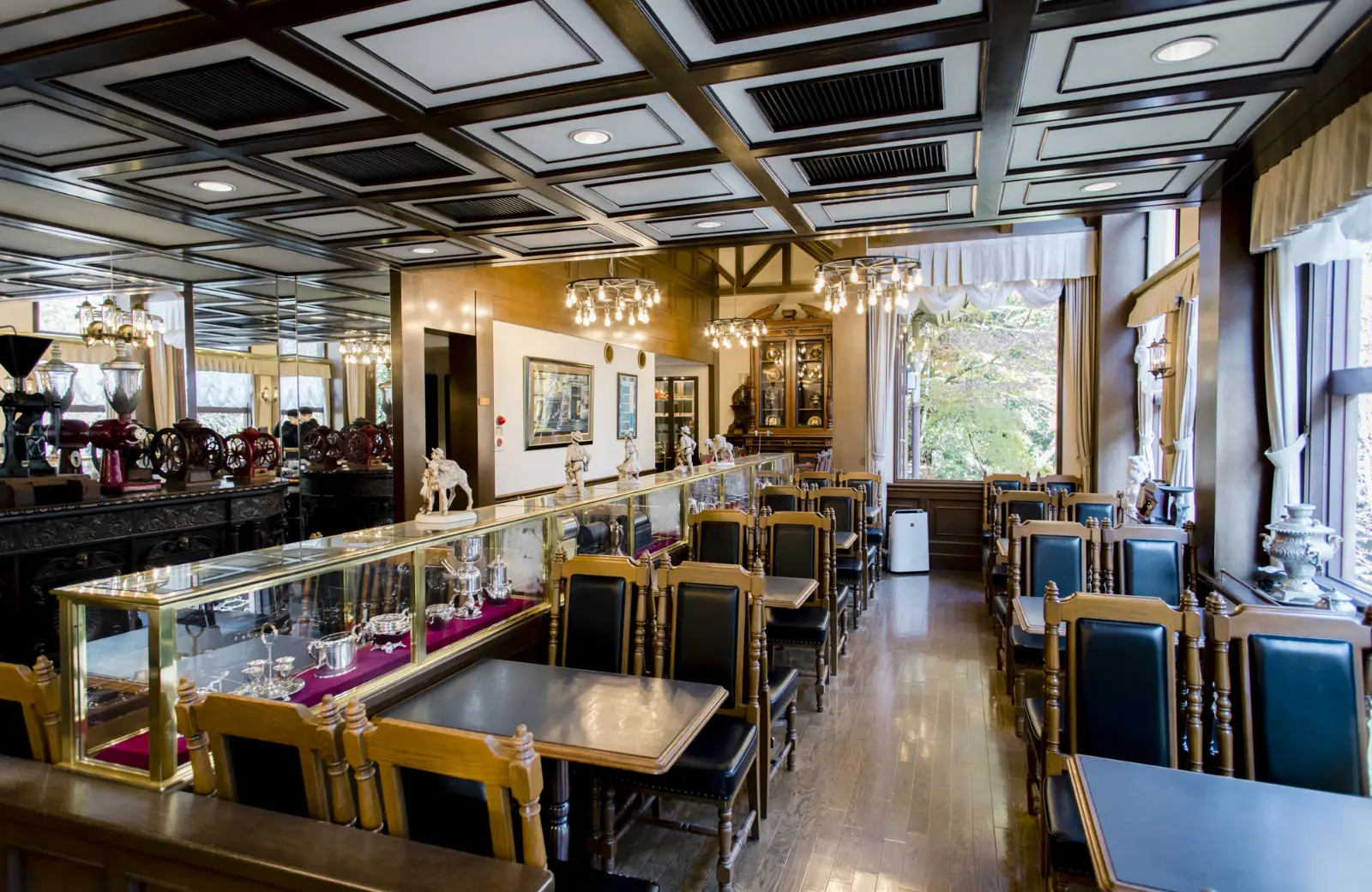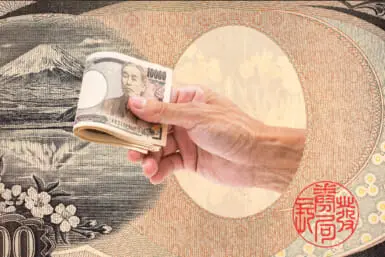Every November and December, Kansai locals and visitors alike make a beeline for Kyoto’s famous temples and gardens to enjoy the fall colors. Although Osaka is not as highly sought after for fall foliage, it certainly boasts its own set of picturesque spots. Minoh city — just a short train ride away from Osaka’s downtown — offers delightful autumnal sights.
Minoh, a small city at the foot of the Hokusetsu mountains in northern Osaka, is known for its rich natural beauty and peaceful residential neighborhoods where, because of the city’s proximity to Osaka University and other educational institutions, a thriving foreign population resides. The city is also home to the expansive Meiji-no-Mori Minoh Quasi-National Park, in which visitors will find Minoh Park and the much-loved Minoh Waterfall.
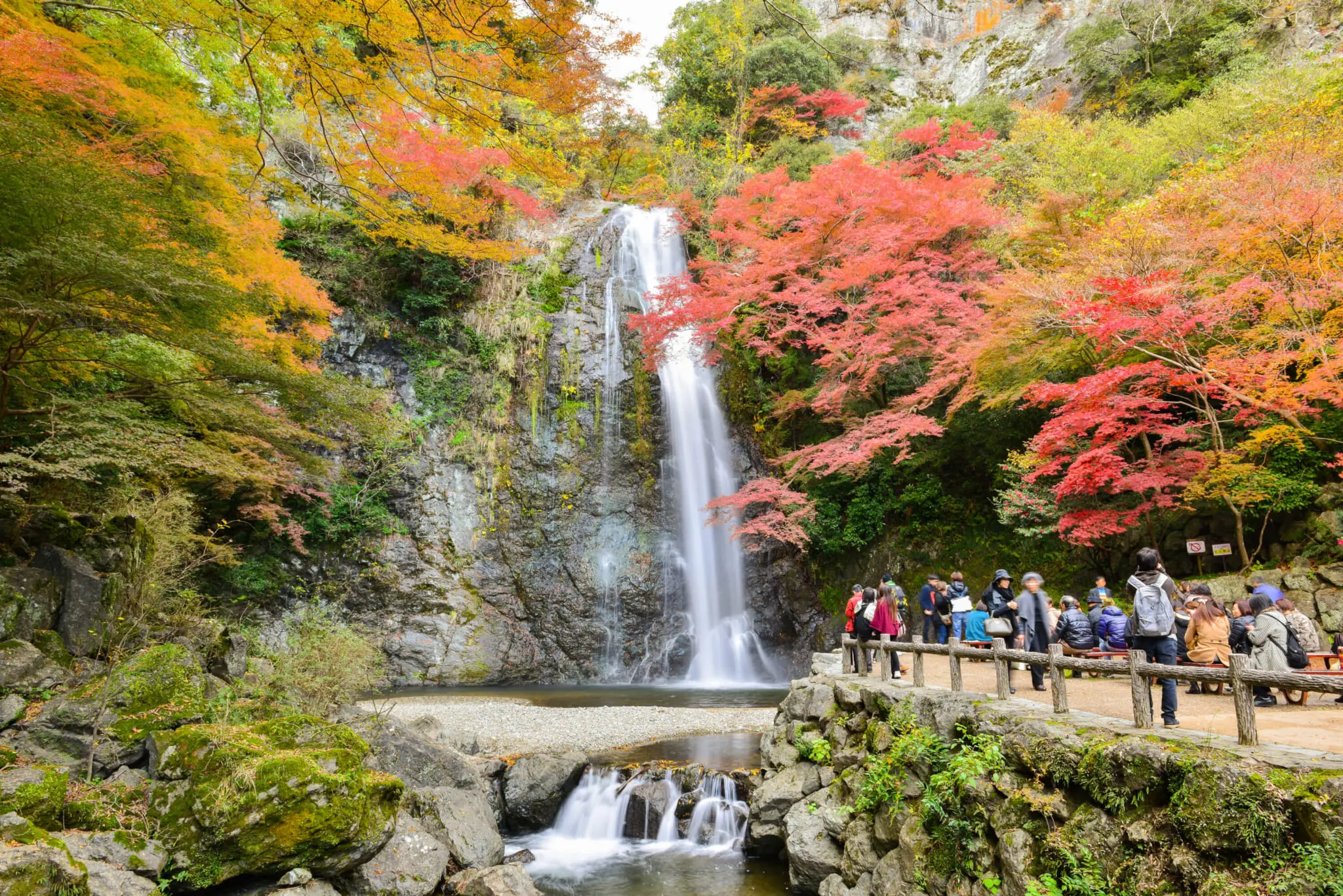
Minoh Waterfall
Minoh’s Treasured Landmark and Namesake
Named one of the 100 Best Waterfalls in Japan, Minoh Waterfall is a sight to behold throughout the seasons. Its gently curving crest is said to resemble a traditional farming tool called a winnowing basket — mi in Japanese — and shaped the name of Minoh city. The spiritual energy of the waterfall has attracted many influential figures and artists, including feudal lord Oda Nobunaga and haiku master Matsuo Basho.
An Autumnal Wonderland
The waterfall is at its most enchanting from late November to early December, when it’s framed by a lush canopy of vibrant red, burnt orange and golden yellow. At its base, a traditional Japanese bridge arches over the river and mirrors the crimson hue of the fluttering maple leaves overhead.
Visitors can hike along a paved path from Minoh Station to the waterfall in about 45 minutes. Along the way, stop by shops selling souvenirs and local specialties like momiji tempura — fried Japanese maple leaves said to originate some 1,300 years ago.
These sweets, made with the autumn yellow leaves of the ichigyoji maple, take more than a year to prepare in a process that involves harvesting the leaves, preserving them in salt, hand-selecting undamaged leaves and, finally, frying the leaves and flavoring them. One of the most famous shops is Hisakunikosendo, located right in front of the station exit.
As you wander the area, keep your eyes peeled for Japanese macaques, which can often be seen lounging around the trail and falls. But though you may be tempted to toss them a treat, don’t: It’s prohibited to feed the monkeys.
Katsuo-ji Temple
A Clan of Darumas
Further up the mountain from Minoh Waterfall is Katsuo-ji Temple, another treasured local spot for foliage viewing alongside its main distinguishing feature: hundreds of daruma dolls. This Buddhist temple sits on over 260,000 square meters of land and is famous for granting kachi-un — winner’s luck — to patrons about to face an important test, job interview or other challenge.
The temple’s reputation for helping patrons triumph over adversity originates in its name, which is written using the kanji for “win” or “prevail” (katsu) and the kanji for “tail” (o). Interestingly, the “o” of “Katsuo-ji” was originally written with the kanji for “sovereign” (ou), having been christened the “temple that prevails over sovereigns” in the ninth century after the temple’s prayers cured Emperor Seiwa (850–881 CE). The temple eventually adjusted the name, swapping out the “ou” for “sovereign” for a character that matched closely in pronunciation.
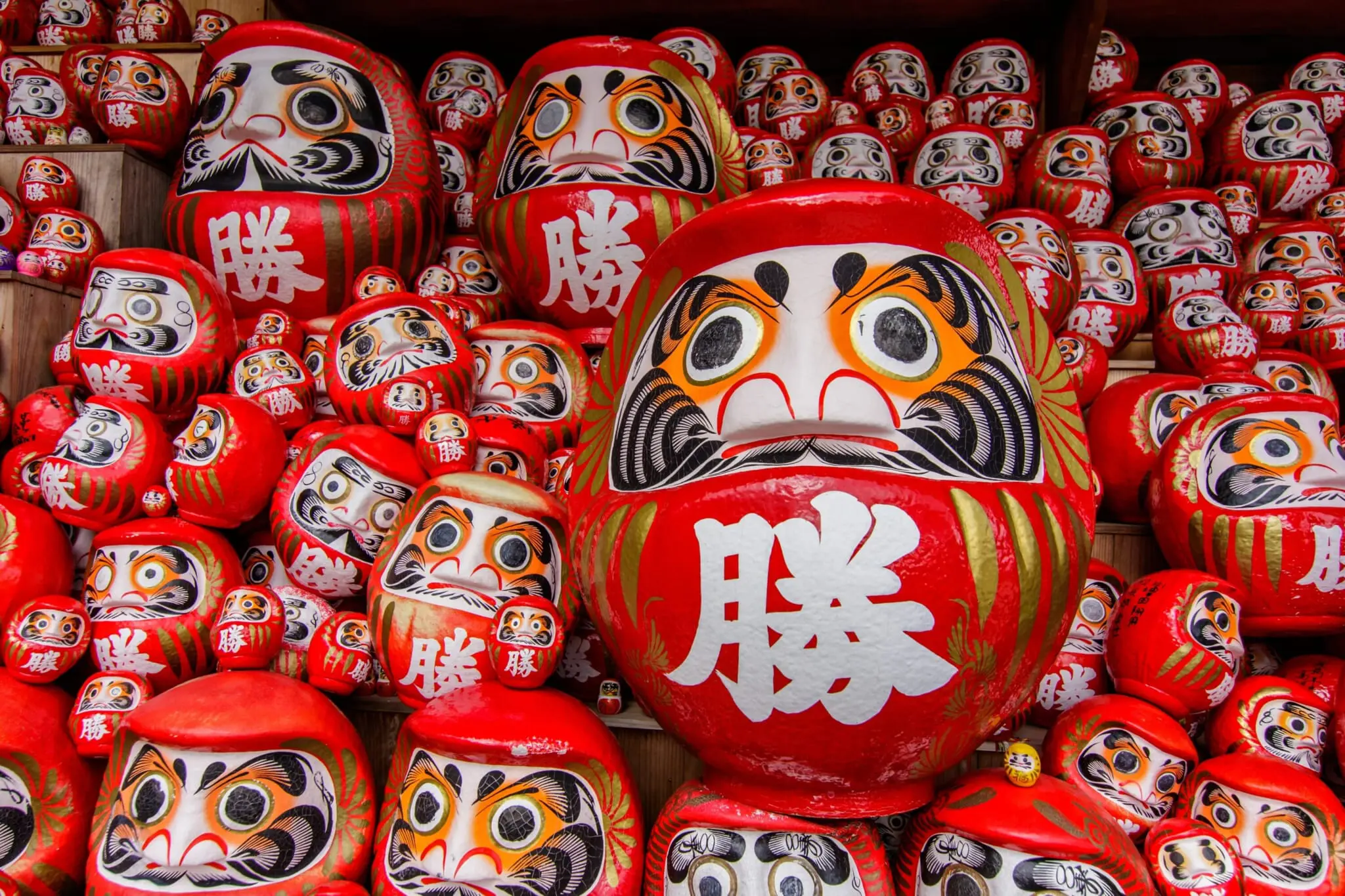
Daruma dolls of many sizes adorn every nook and cranny of the temple grounds, and seeing how many you can spot is a fun activity in and of itself. These kachi-daruma, or “winning daruma,” are unique to Katsuo-ji and have the kanji character for “win” on their bellies.
Pray To Win
To have your wish granted — whether it’s passing the JLPT N1 test or successfully proposing to your girlfriend — you must first buy a blank-eyed daruma doll and write your immediate goal on its back. The bottom of the doll is reserved for writing down your broader goal. (For example, you might write “pass JLPT N1” on its back and “move to Japan” on its bottom.)
After taking a few incense sticks and praying, hold your daruma doll over the incense smoke, and then fill in one of its eyes with a marker. Once your wish is granted, fill in the other eye and return to the temple to place your daruma doll on the special dedication shelf.
The temple also features daruma mikuji (fortune slips). If you’re seeking guidance about a particular situation or aspect of your life, select a mini daruma doll with a mikuji sticking out of it. These small dolls can be placed anywhere on the temple grounds once you’ve read your fortune, or they can be taken home as souvenirs. The temple gift shop sells many other quirky daruma-themed gifts, snacks and more.
Where To Eat in Minoh
Yuzuya
There’s no shortage of charming cafes and restaurants in the station and park area, especially along the path to the waterfall. An option brimming with atmosphere right by the river is Yuzuya, a cafe and restaurant run by food activist Hiroaki Ukita. The building, originally a Meiji-era ryokan, was restored in 2020. The first-floor cafe, with a terrace seating option, serves casual meals, cakes, croffles with homemade yuzu butter and a variety of beverages.
For those looking for a fancier meal, the second floor houses Yuzuya a Table Ukita, a reservation-only sustainable French restaurant. Chef Ukita focuses on Japanese fermentation techniques and healthy ingredients. Closer to the waterfall, there’s a smaller Yuzuya location that sells snacks, soft serve ice cream and hot drinks.
Kawadoko Isoyoshi
Kawadoko Isoyoshi is a riverside kaiseki restaurant with a long history dating back to the Meiji era. Only open between late April and late October/early November due to its outdoor-only seating, the restaurant gives guests the chance to savor elegant kaiseki-style makunouchi bento delicacies, such as sashimi, pickles, tempura and salt-grilled ayu sweetfish, while enjoying the crisp autumn air and the tranquil sounds of the Minoh River. Reservations are required at least a day in advance, as seating is limited. Business hours depend on the month, with autumn hours running from noon to 4 p.m.
Yamamoto Coffee Kan
For coffee enthusiasts, as well as lovers of all things retro, Yamamoto Coffee Kan is the ideal choice for refreshments. Yamamoto is a well-known specialty coffee brand established in the 1950s. This specific location offers classic kissaten-style foods and drinks: sandwiches, curry, desserts and steaming hot coffee served in antique pots. The cozy interior of the coffee shop is perfect for a chilly autumn day, and outdoor tables are available for those who want to sip their drink in a forest breeze.
Travel Recommendations
The Minoh Takimichi One-Way Sightseeing Shuttle Bus makes stops at several points of interest in Minoh, including Minoh Waterfall and Katsuo-ji Temple. A one-day ticket (unlimited rides) costs ¥2,000 for adults and ¥1,000 for children.
For a fall color forecast, check out Minoh Park’s autumn foliage report.

